What is the Changing the Guard tradition? 32 fun facts about the historic ceremony
Changing the Guard is another example of Britain doing what it does best - pomp and ceremony. But what is the tradition really all about?
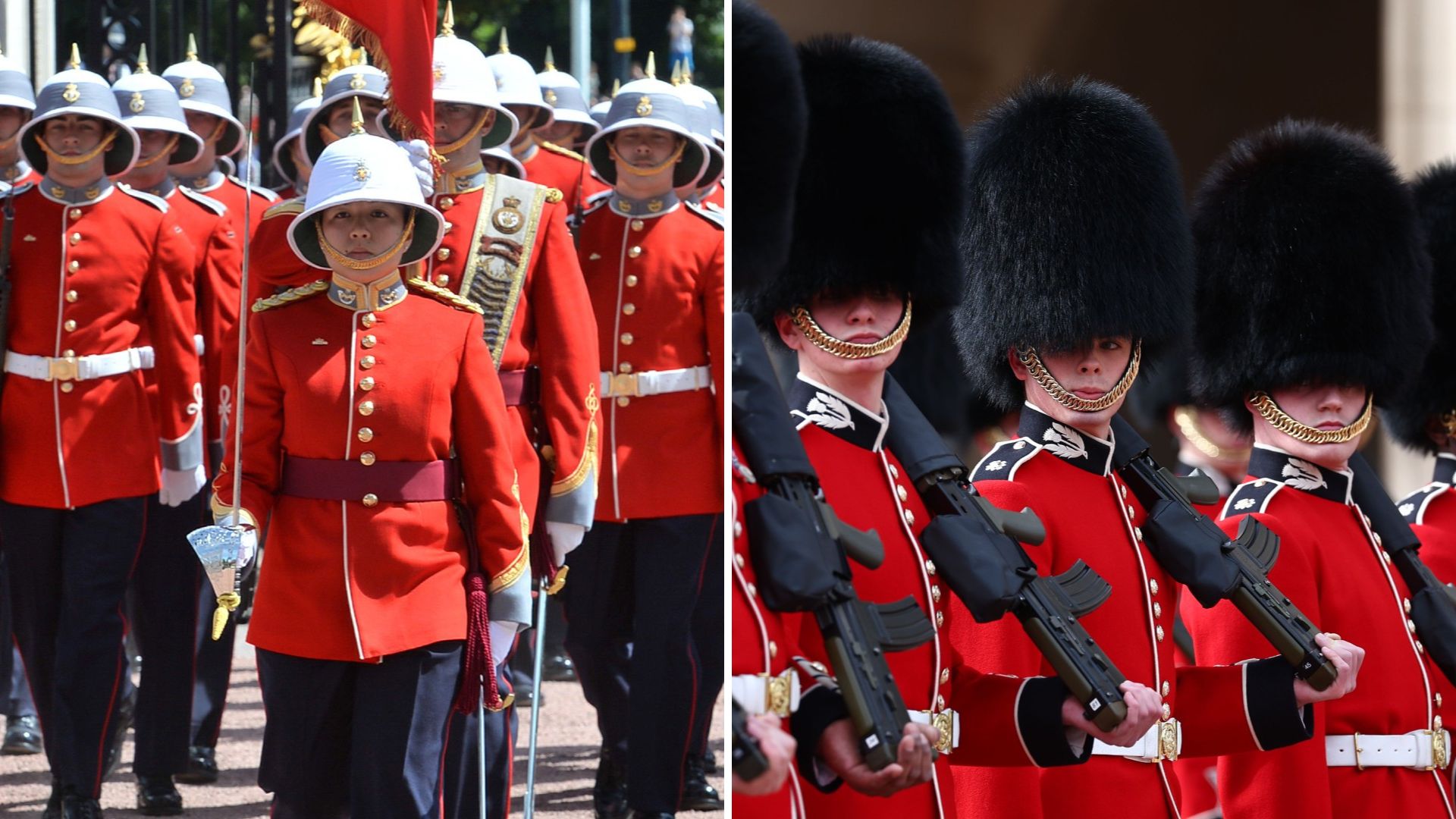

Does anyone in the world do pageantry quite like the British Royal Family?
From moments that will go down in history like Prince William and Kate Middleton's wedding and King Charles' Coronation, the world watches as the little island puts on one huge show.
And, quite frankly, they get plenty of practice with the likes of the annual Trooping the Colour parade and the Changing the Guard ceremony, which takes place multiple times a week.
But what's Changing the Guard all about? We gathered all the facts about the tradition.
32 facts about the Changing the Guard
What is Changing the Guard all about?
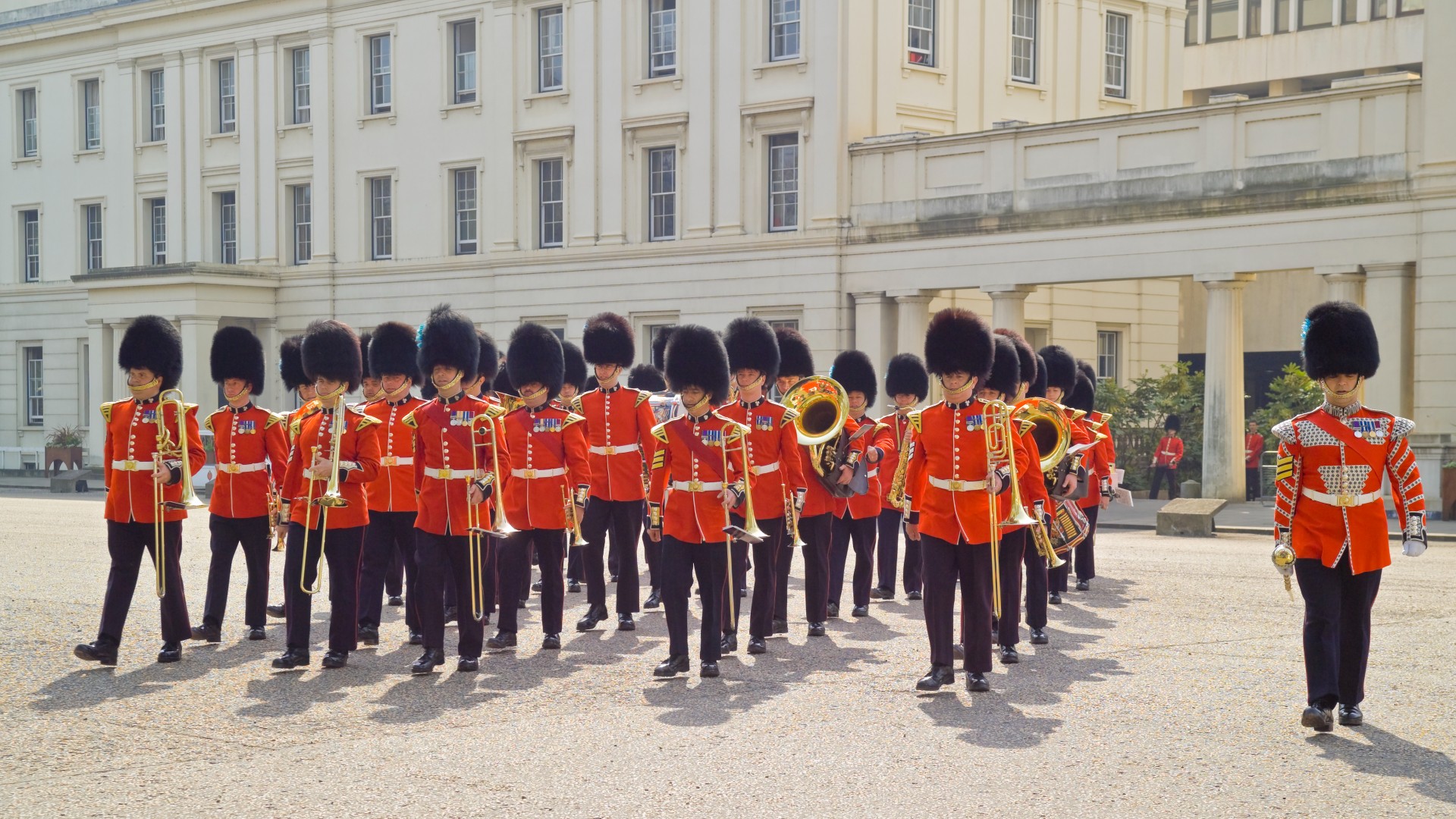
While it might look complicated - that's part of the flair that comes with such a spectacle - Changing the Guard is a case of 'does what it says on the tin'.
Put simply, it’s a tradition which takes place every other day (usually) and it’s where a regiment, or a division, who have been guarding over a royal residence swap with a different set of guards.
It can also be referred to as Guard Mounting.
Sign up for the woman&home newsletter
Sign up to our free daily email for the latest royal and entertainment news, interesting opinion, expert advice on styling and beauty trends, and no-nonsense guides to the health and wellness questions you want answered.
There are four posts protected by the Guards
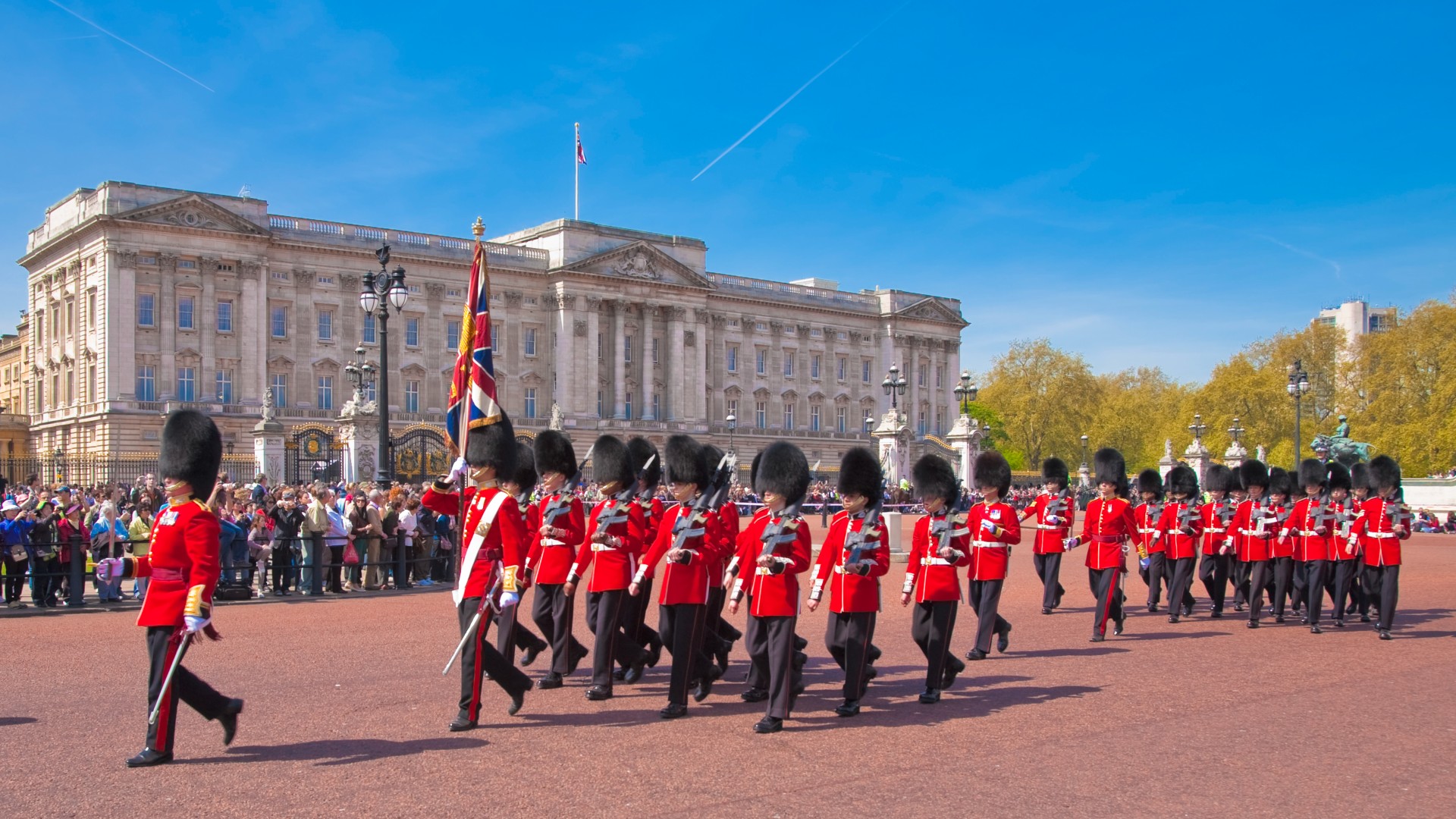
Today, there are four major posts guarded at all times.
These are Buckingham Palace (a fascinating landmark filled with interesting facts), St James’s Palace, the Tower of London and Windsor Castle.
Over the years, there have been a number of places that were guarded. These included Kensington Palace and the British Museum. There were also three night guards at the Bank of England, Theatre Royal Drury Lane and The Royal Opera House.
What actually happens during the Changing the Guard?
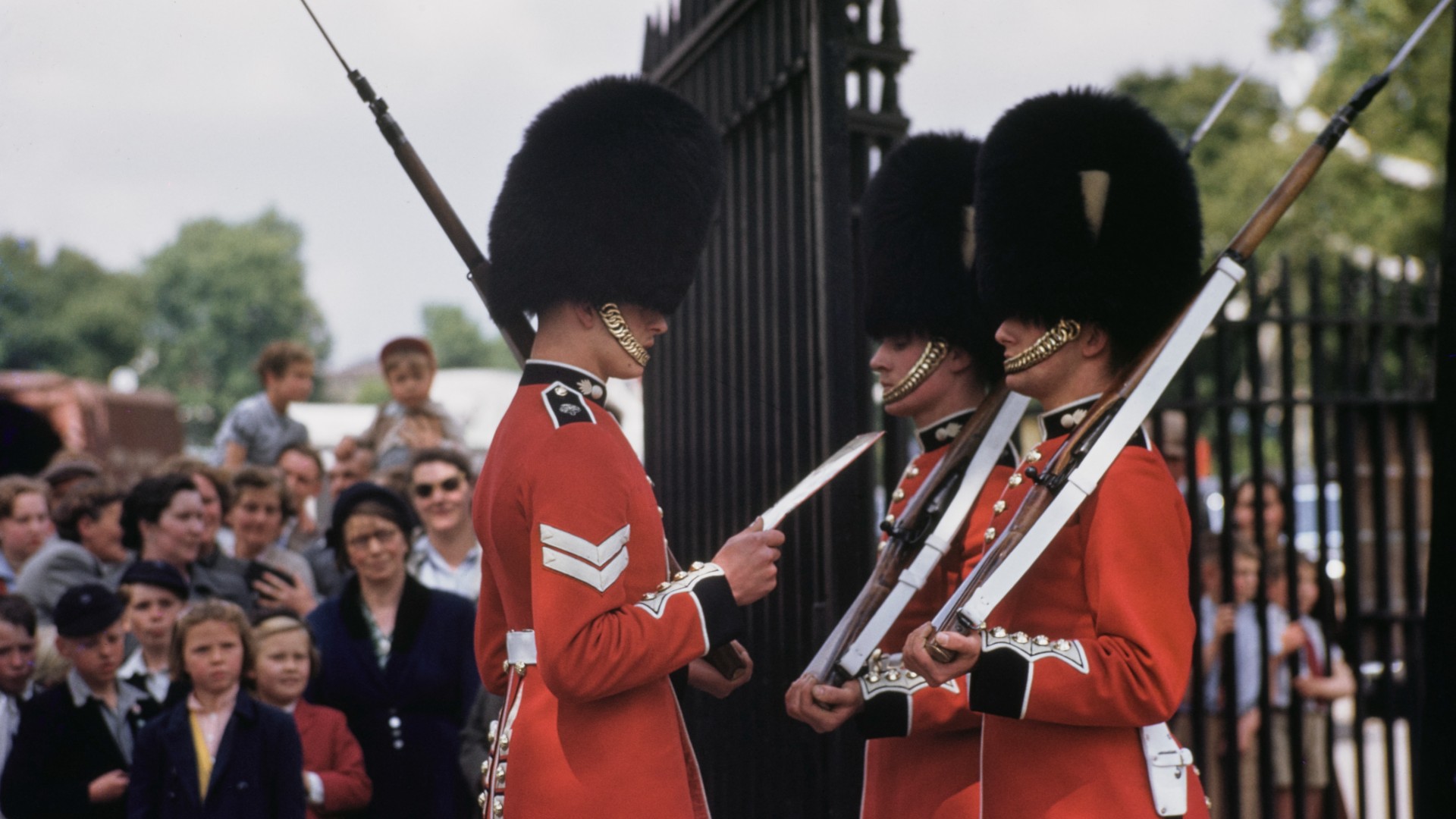
The Old Guard (the soldiers currently on duty) form up in front of the residence and are relieved by the New Guard. For Buckingham Palace, the New Guard will arrive from Wellington Barracks. The New Guard is accompanied by a band.
How to watch the Changing the Guard
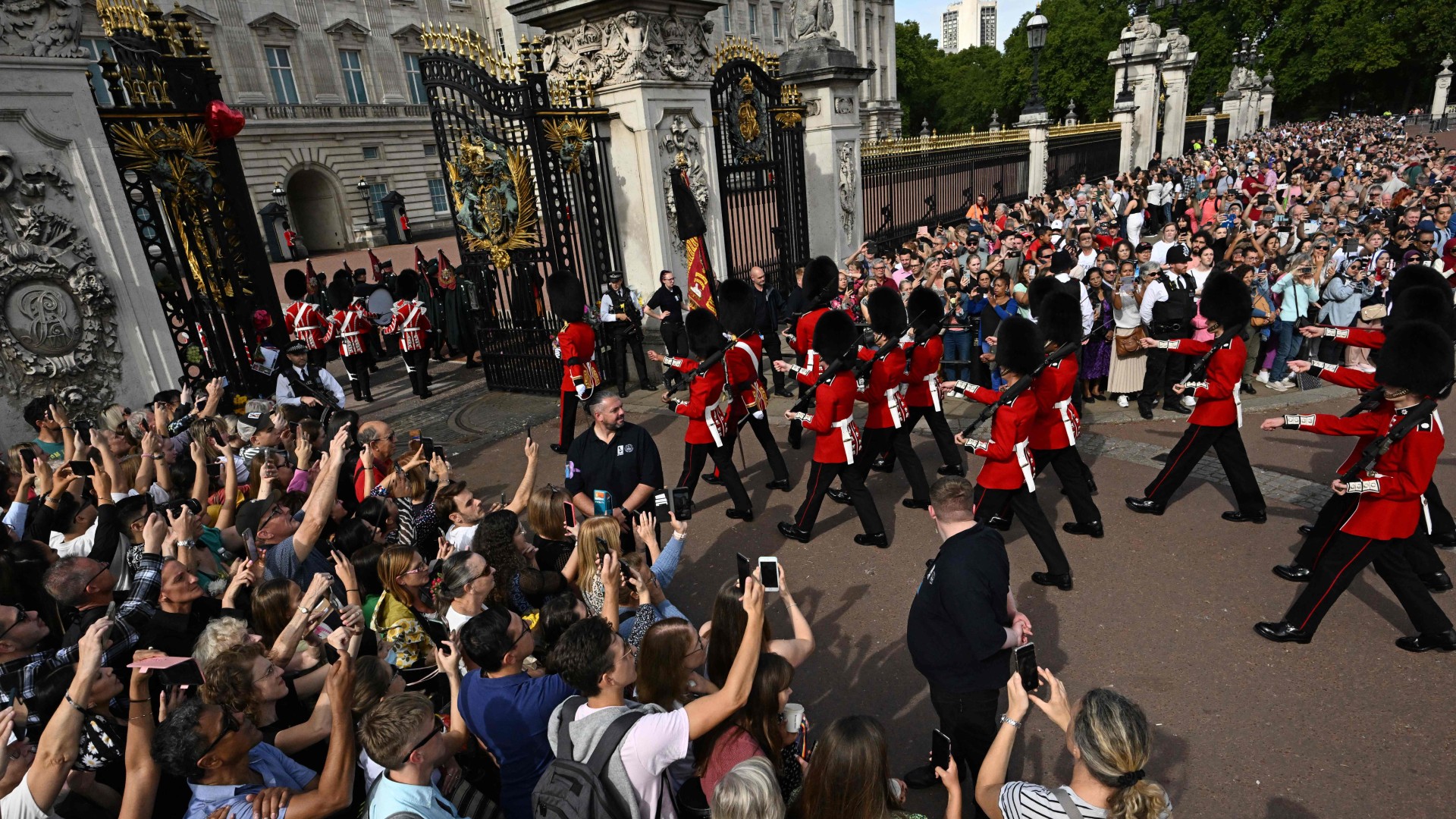
Typically, Changing the Guard takes place every Monday, Wednesday, Friday & Sunday at Buckingham Palace, and at Windsor Castle, it’s every Tuesday, Thursday & Saturday.
The official start time is at around 11 am and fans are welcome to watch for free.
While people do come to watch, it's never so busy that you should worry about getting there more than 10 or 15 minutes early.
Things like the weather can change the schedule, and people are encouraged to check online before setting out to spectate.
How old is Changing the Guard?
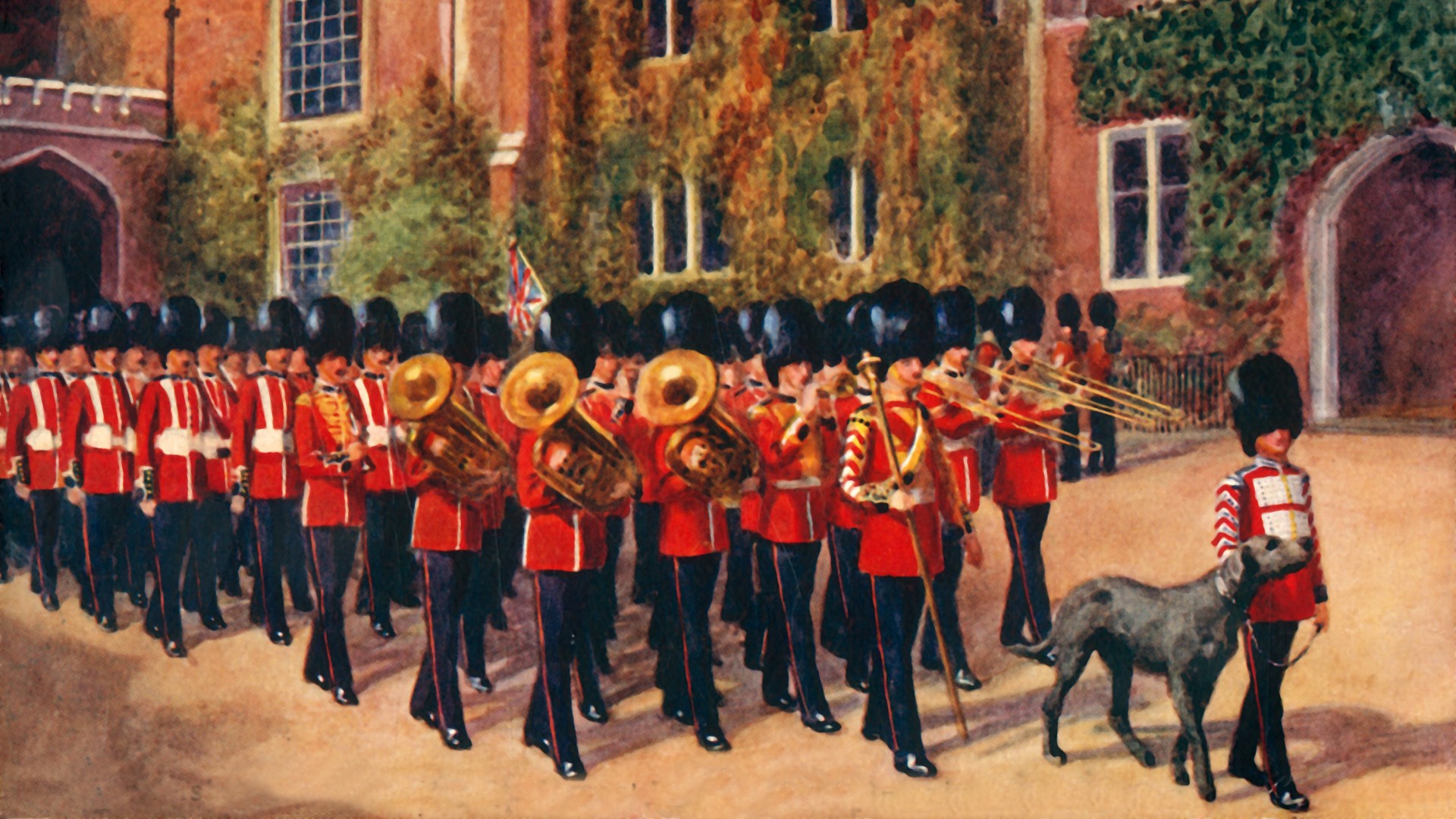
While some factors are newer, the tradition of having a dedicated guard to the monarch dates back over 500 years. The earliest date widely cited is 1660.
Who takes part in Changing the Guard?

There are seven regiments that will guard the monarch at all times, and they are collectively called the Household Division.
Factions of these seven regiments of the Division are those who take part in the Changing of the Guard.
The unity of the seven regiments has also given rise to the motto of Septem juncta in uno, Latin for 'seven joined in one'.
What is the monarch's role?
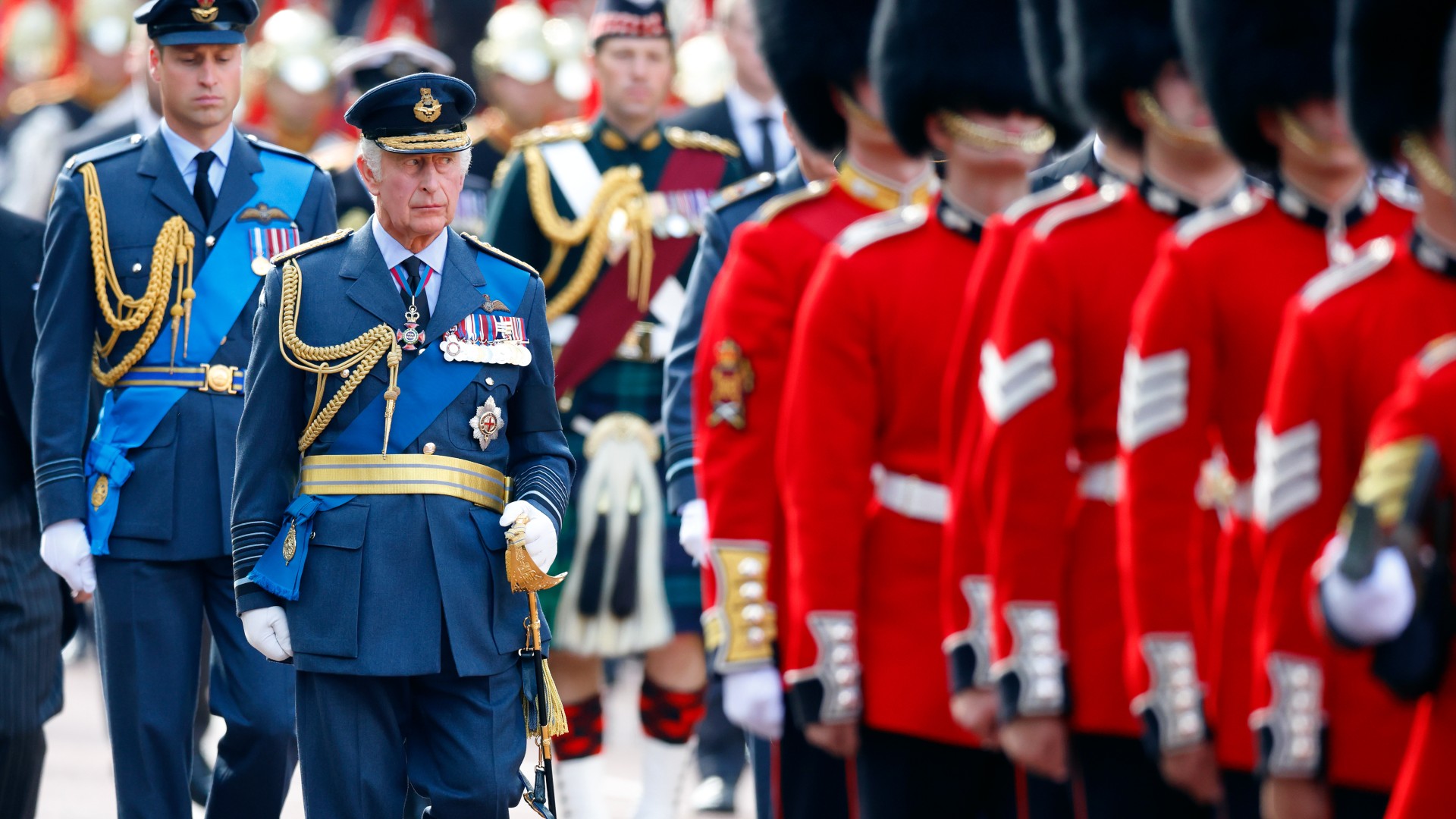
You typically won't see King Charles involved day-to-day, though monarchs have inspected the divisions in the past, especially around bigger celebrations including Trooping the Colour.
The Guards Division as we see it today was established by the reassembly of the Brigade of Guards in 1968.
His Majesty is officially the Colonel in Chief of all the regiments in the Household Division.
Henry VII was the first to appoint an official Guard
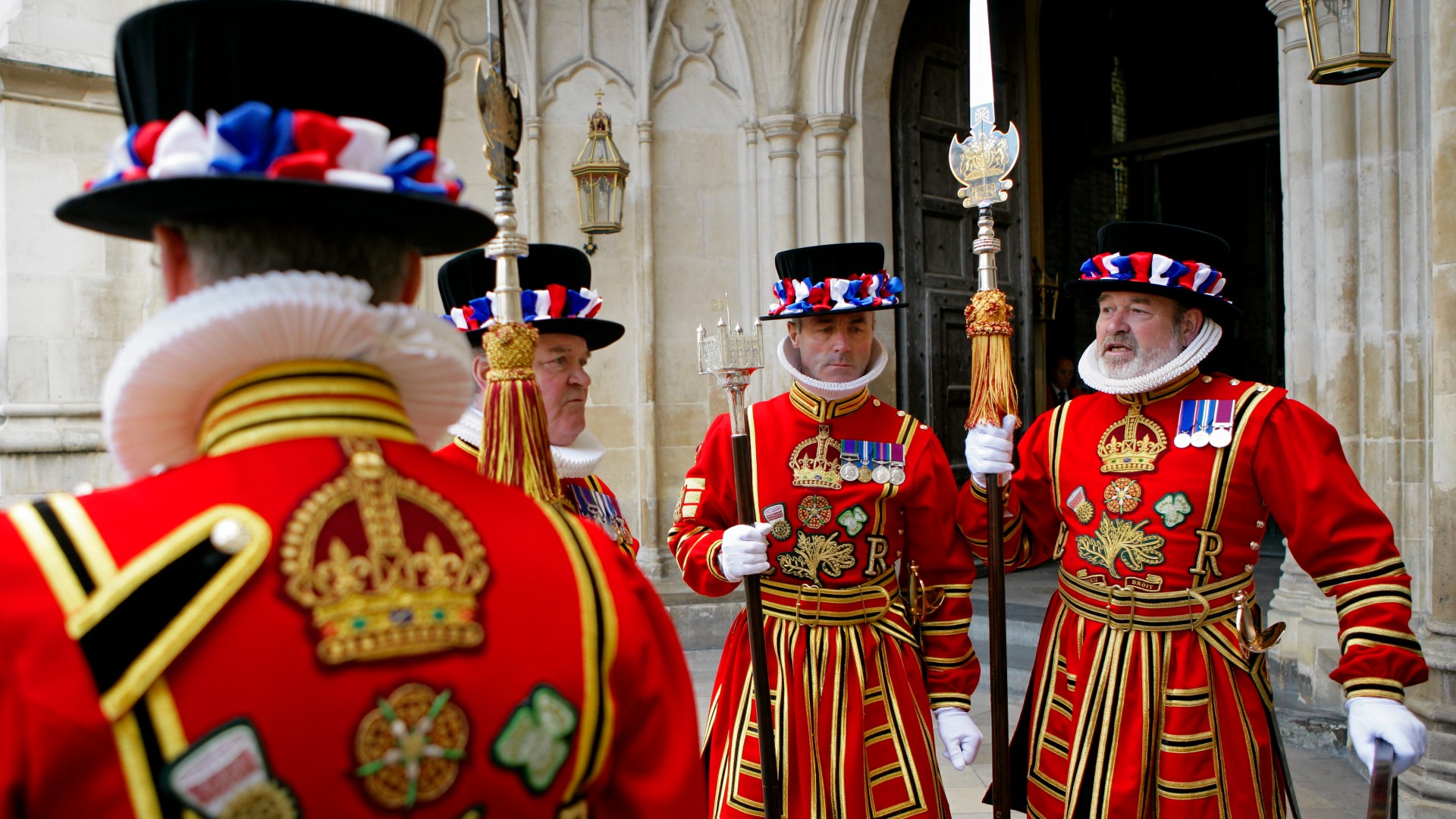
It was King Henry VII, the first of the Tudor dynasty, who made his Royal Body Guard a permanent institution and conferred on it a title, a title it continues to hold (the Yeomen of the Guard, the guards most commonly associated with the Tower of London in the present day).
Later, Guards Regiments were formed to provide a personal bodyguard for the Sovereign with the first Guards raised in 1656 to protect the exiled King Charles II.
Who makes up The Household Division?

The Household Division is made up of the Household Cavalry, which includes The Life Guards and The Blues and Royals, as well as five regiments of foot guards.
These foot guards are made up of the Grenadier Guards, Coldstream Guards, Scots Guards, Irish Guards and Welsh Guards.
Each one bears their own regimental colours and flags.
Being one of the Guards is a voluntary honour
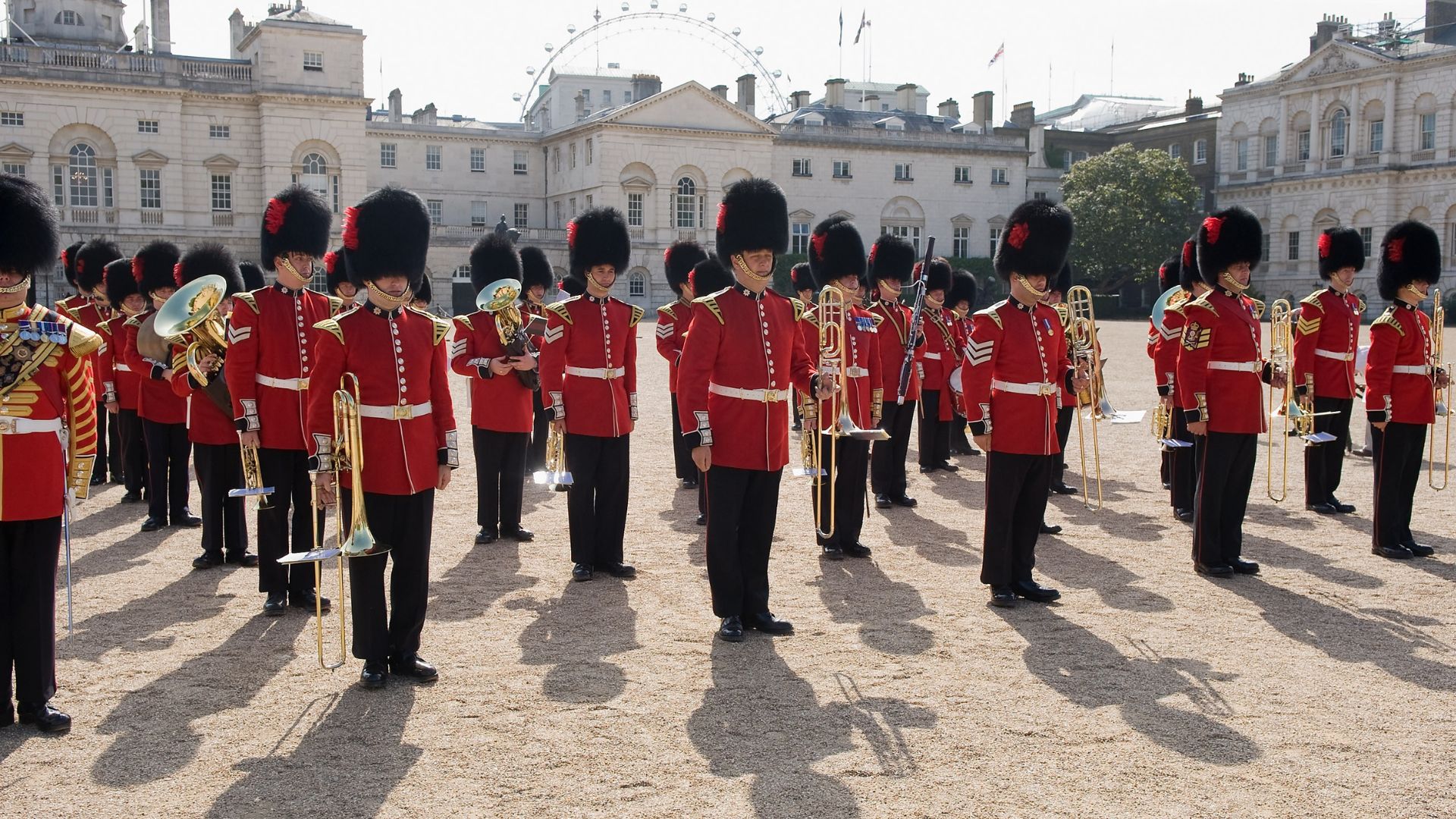
Being one of the Guards is a huge honour, and it is far more than just a ceremonial position.
The Guardsmen are all experienced soldiers who have fought in some of the worst conflicts across the world.
They volunteer for this guard duty as it is considered one of the highest honours to continue to serve the monarch.
What do the guards do during the ceremony?
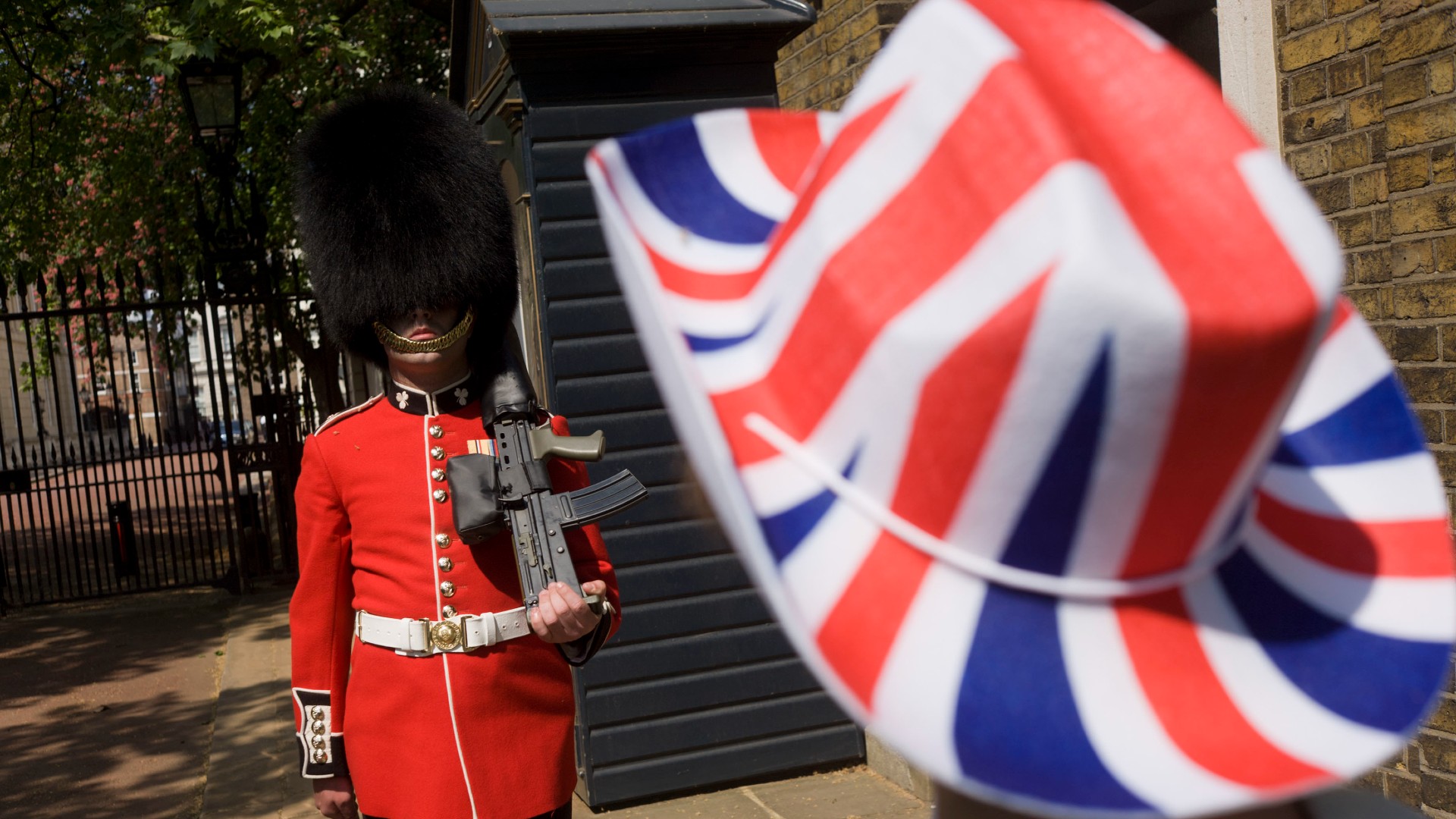
When on duty, each of the monarch’s guards will spend two hours on duty before switching over.
Their duties require plenty of patience and perseverance, mostly being expected to stand still for a lot of the time, or marching.
They do not eat, sleep, sit or lie down when on duty. Every ten minutes a sentry will come to attention, slope arms and march across their post, normally about 20 paces. Repeating this four or five times the guard halts, shoulders their arms and returns to standing at ease.
It’s a heavy burden – literally

Sure, it's a huge honour to serve the monarch so personally, but it does not come easily.
The Bearskins worn by the guards and instantly recognisable the world over are made from Canadian bear fur.
They can be up to 45cm tall and weigh around one and a half pounds.
And the band play on…
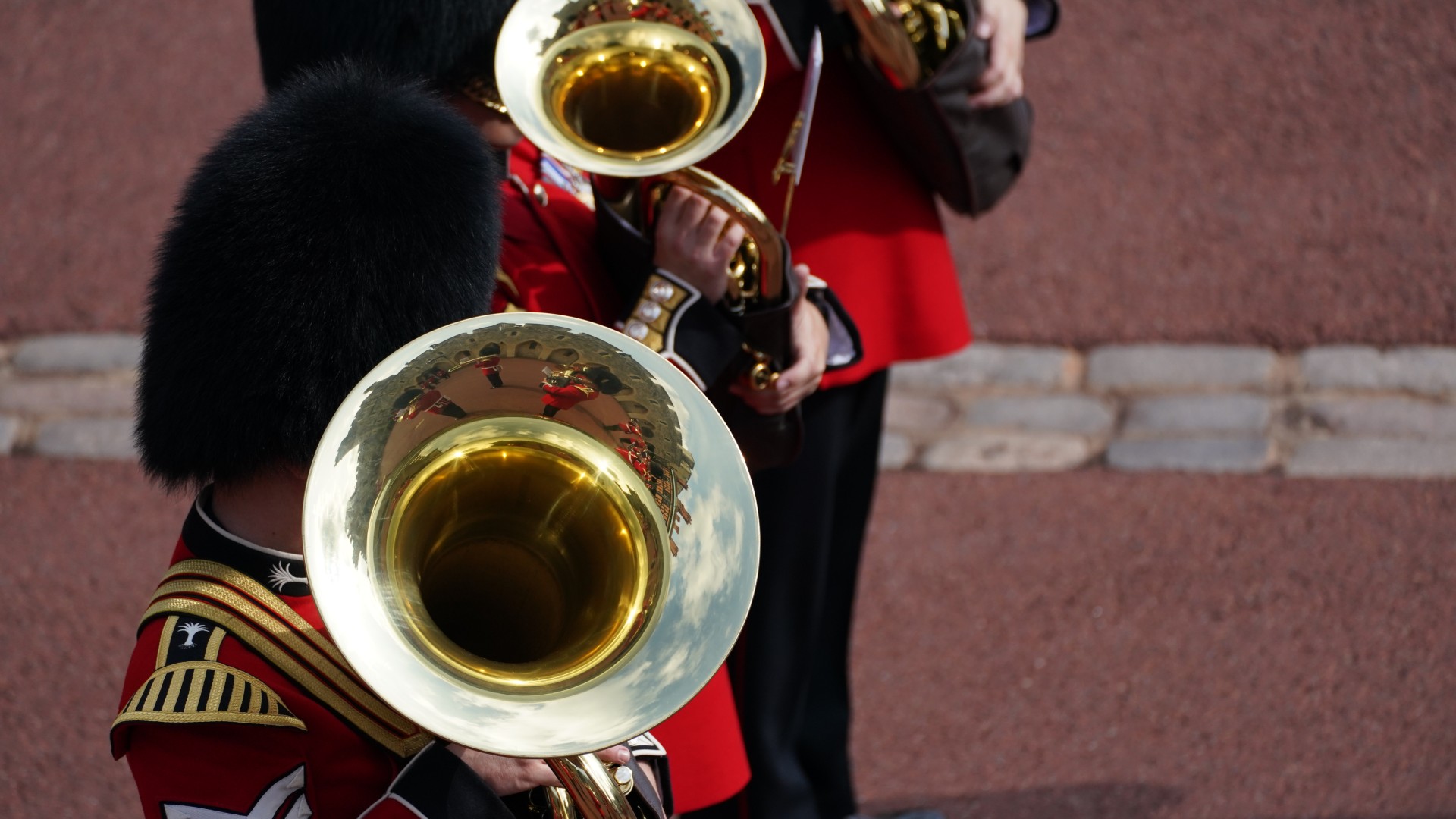
Part of the spectacle of the ceremony includes some world-class music. Each of the regiments is accompanied by marching military bands whose origins go back to the war-time tradition of having morale-boosting music before a battle, as well as providing a beat with which to march into conflict.
Historically, the band has always incorporated popular modern tunes as well as traditional military music.
The guards can be used to lift the spirit of the nation
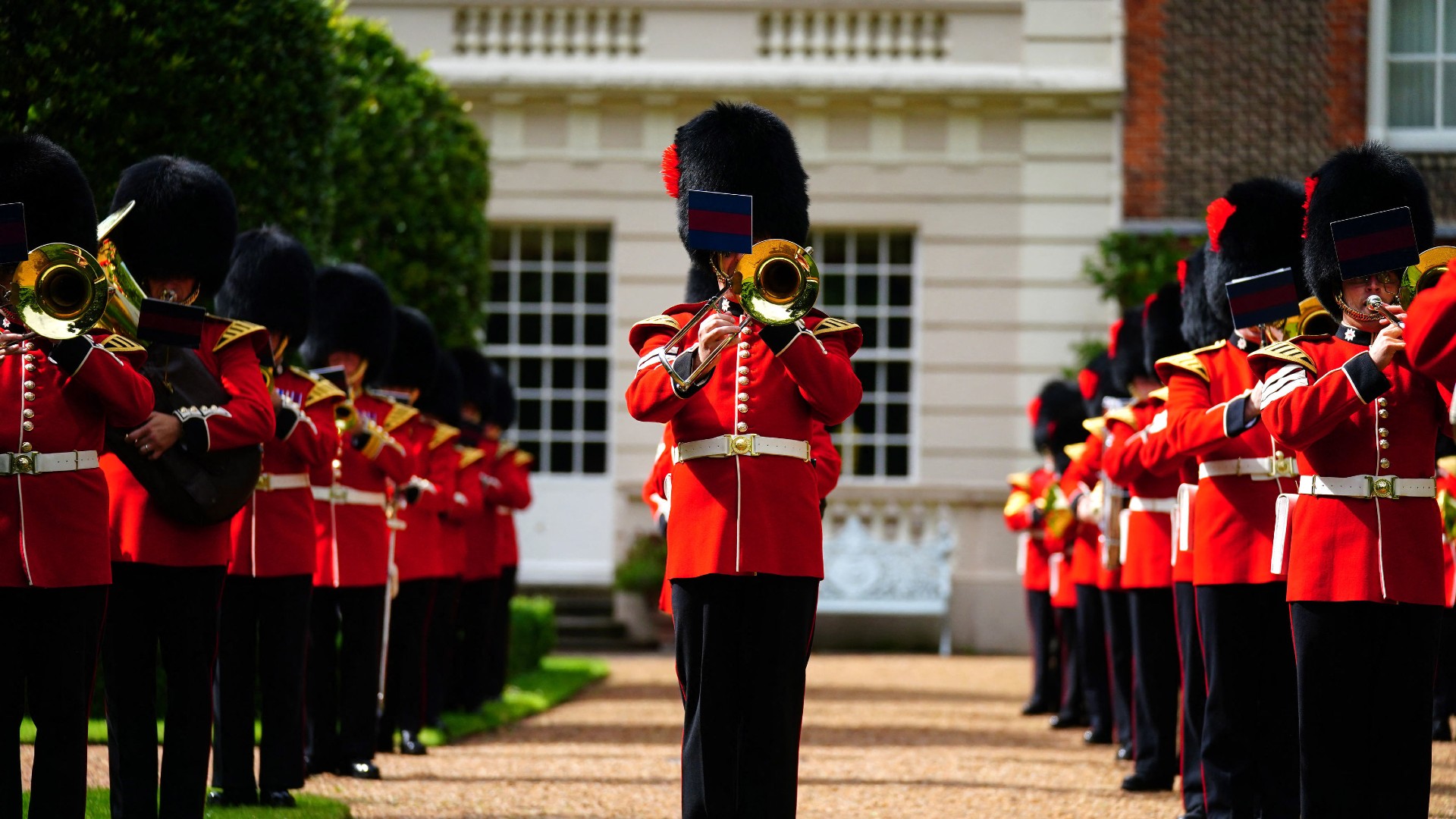
Proving their move to modernity, the royals are no strangers to doing away with the traditional and have some fun with the guards.
In 2020, the Band of the Coldstream Guards were invited into the Clarence House Garden to play the football theme, Three Lions, ahead of England's semi-final match for the UEFA Euro semi-final at Wembley.
Inspiration can come from anywhere
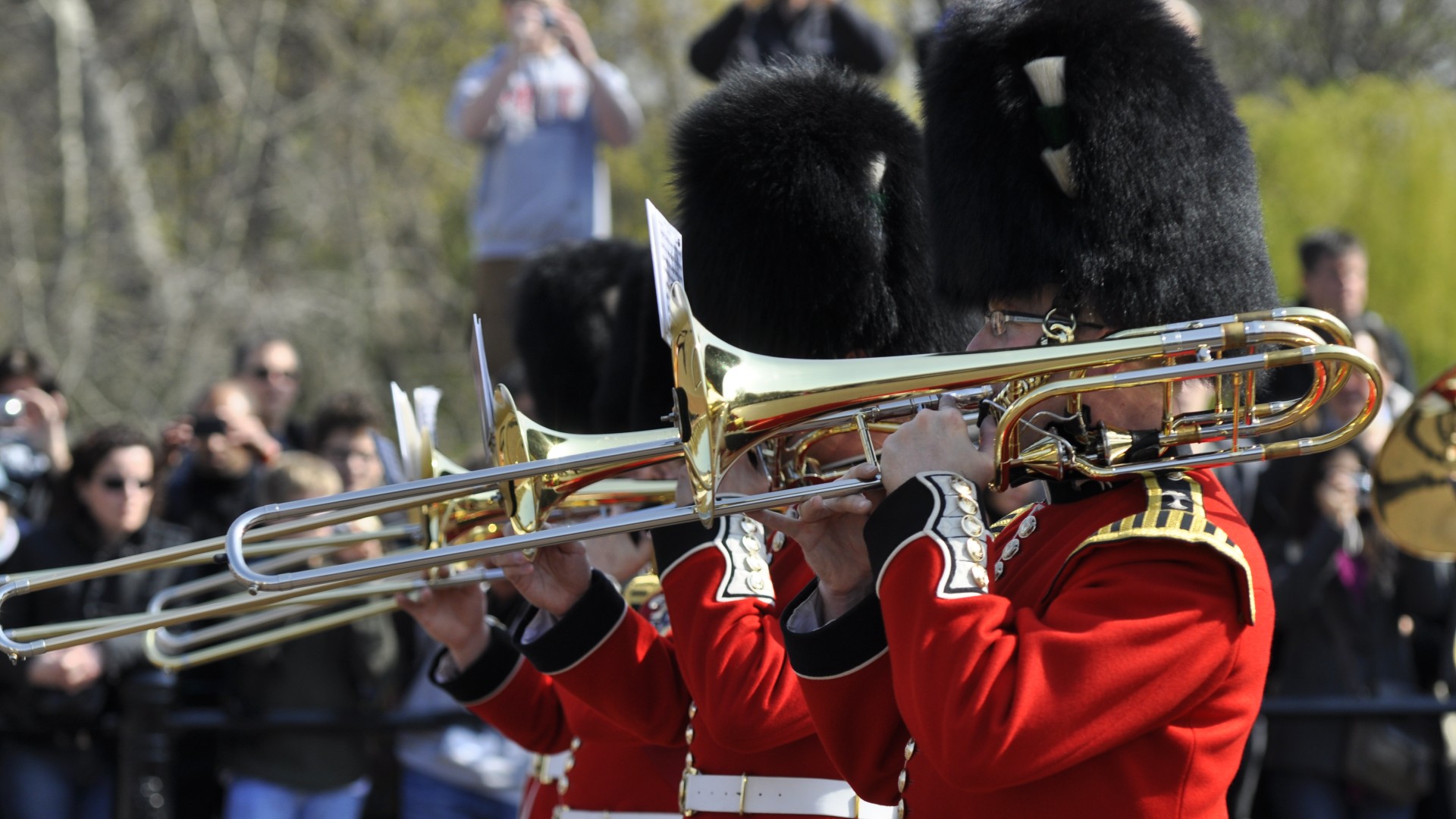
There are plenty of examples where Changing the Guard let loose with tradition and showcased some good humour.
To honour one of the greatest singers, the hit Respect, was played on the day of Aretha Franklin’s funeral.
And any fan looking for a bit of fun should aim to catch the Changing of the Guard on May 4th each year - this date typically sees the Guards getting inspired to play the theme from Star Wars.
The band get feedback – and it’s not always positive
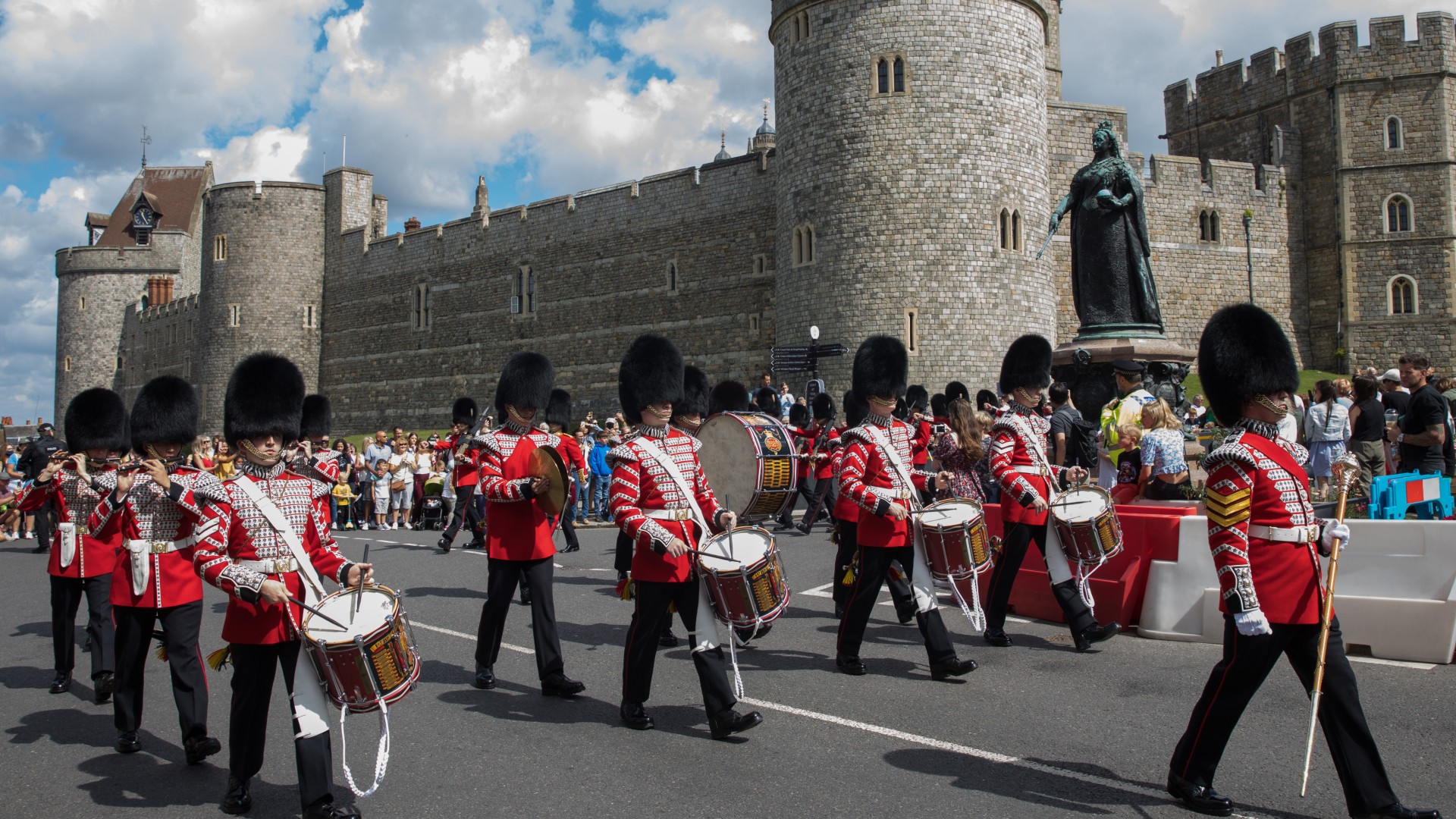
While the guards do have fun with the choice of music, they don't necessarily get free reign.
A widely told story has it that, in 1920, the band was playing a piece from a popular operetta when a footman arrived with a message from King George V, addressed to the Director of Music.
Delighted at communication from His Majesty, he excitedly read the note only to find that it said, "His Majesty does not know what the Band has just played but it is never to be played again."
Talk about hitting the wrong note.
You might be lucky enough to catch a mascot
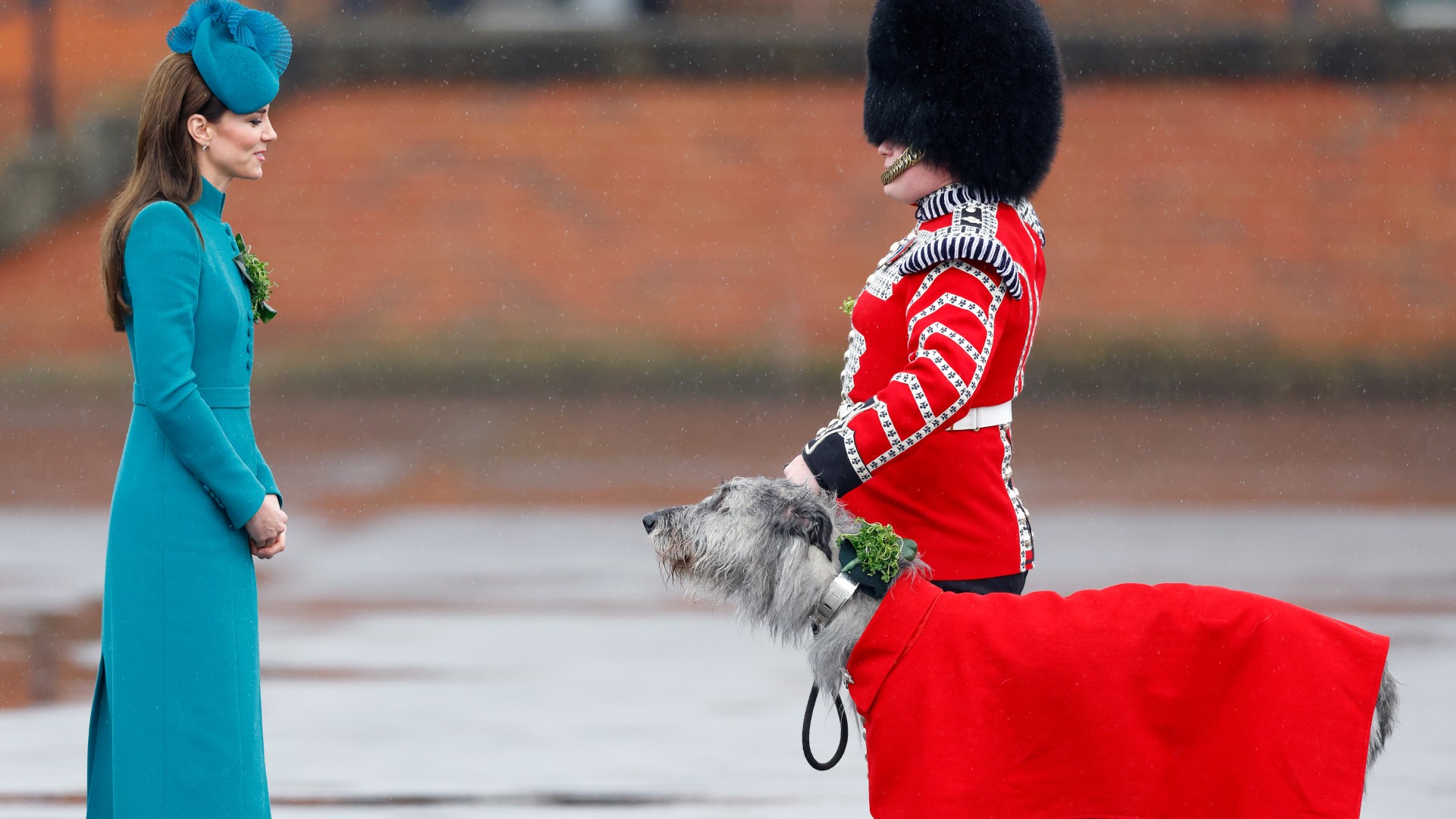
What some might not be aware of is that there are a number of official mascots for the different regiments making up the British Army.
These mascots make rare, but popular, appearances.
The Irish Guard have a wolfhound named Seamus (who has met the Princess of Wales!), and the Royal Regiment of Scotland have a Shetland pony called Cruachan. Perhaps the most bizarre is the Mercian Regiment's beloved ram.
Guards won’t move out of your way
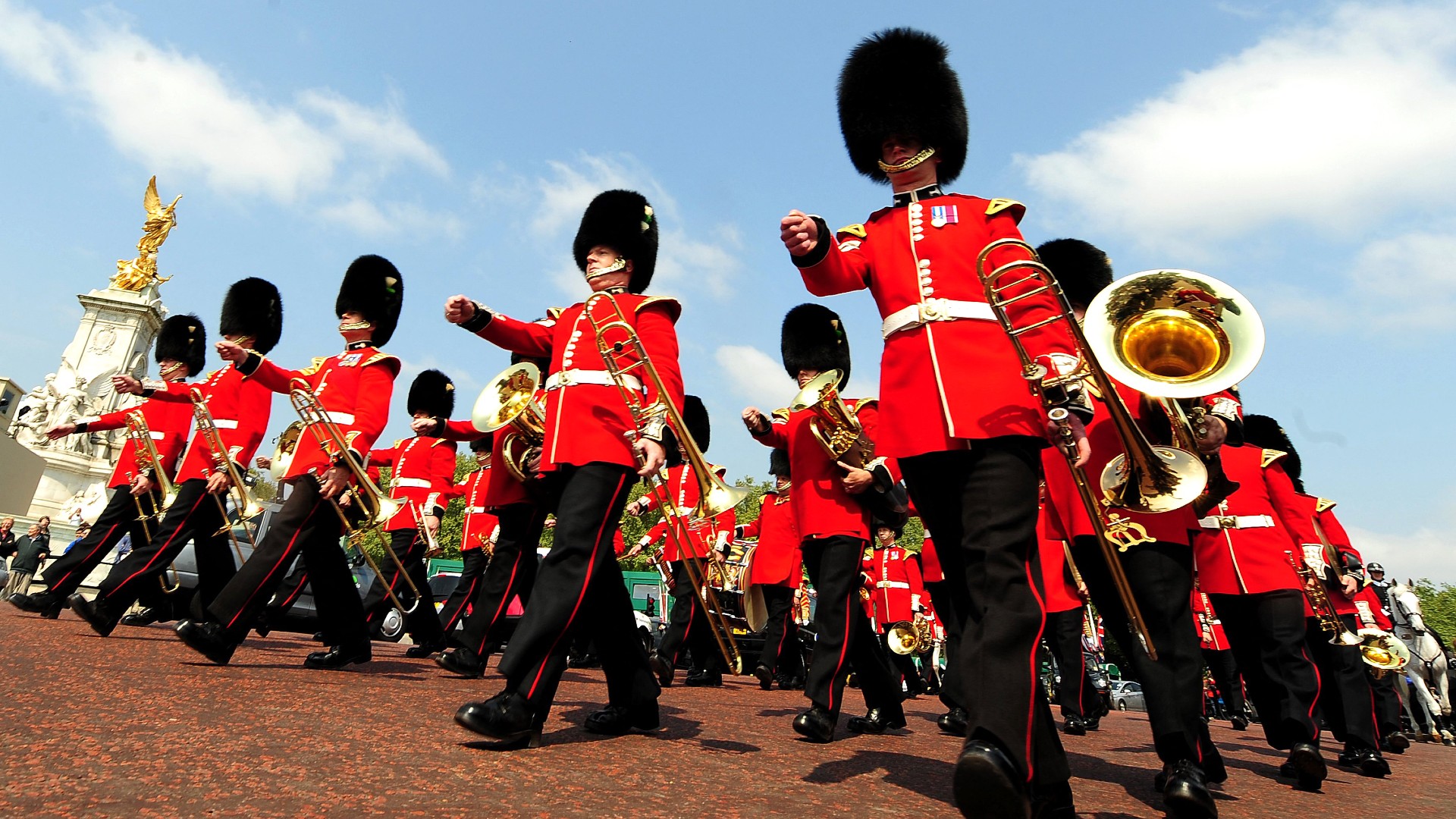
Take care if you pay a visit to see the Changing the Guard. While it might seem like something fun, they take their role guarding the monarch very seriously.
When they are marching to their posts, you will know if you are in the way as you will hear a bellow of “Make way for the King’s Guard!” - and they mean it. As some viral social media clips over the years have proven, they won’t hesitate in marching into you.
They really do have to ignore you
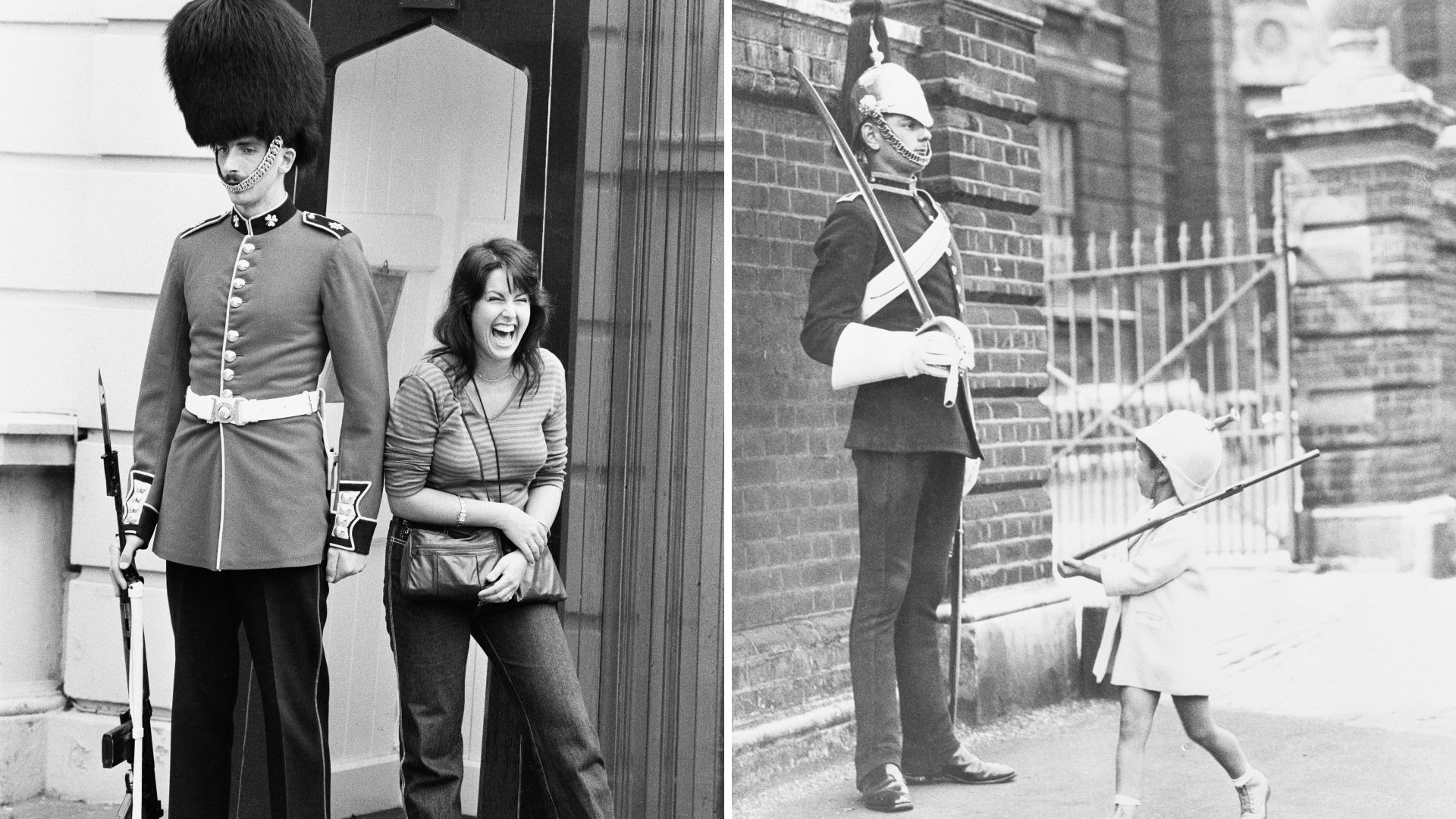
It has become something of a running joke to try and get a guard to laugh or smile, but the chances of doing so are incredibly slim.
The regiments are trained to protect the monarch and therefore will not acknowledge you or allow themselves to be distracted by tourists (but you can sneak a selfie as long as you’re quick and respectful!).
There are more divisions and regiments posted elsewhere
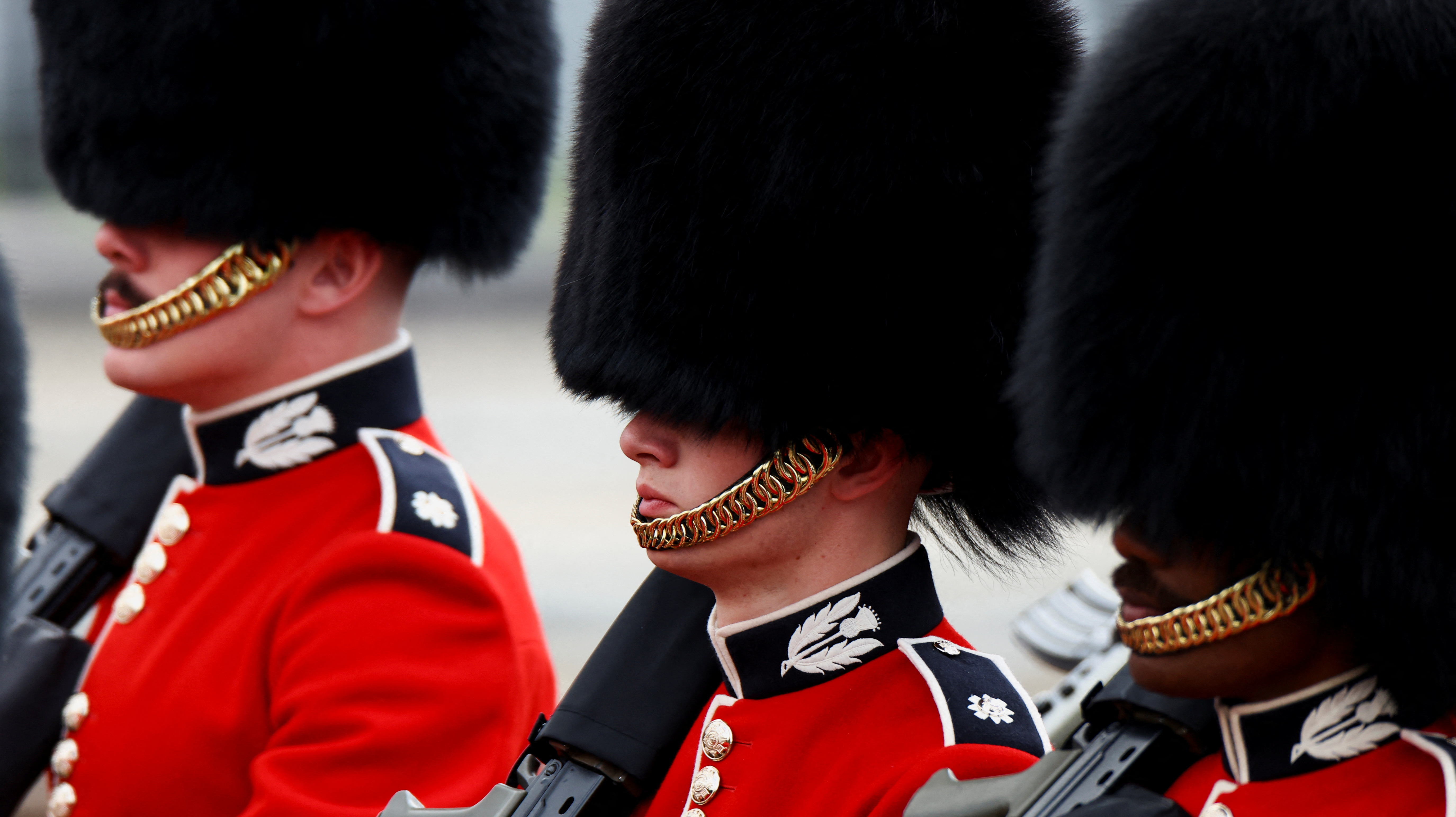
While most of Changing the Guard focuses on the four major posts, there are two cavalry regiments called the Household Cavalry that also form part of the King’s Guard which are stationed at Horseguards on Whitehall.
The two regiments are the Lifeguards and the Blues and Royals (of which Princess Anne is the colonel).
They have their own smaller Changing of the Guard Ceremony.
Both Prince William and Prince Harry have served in the Blues and Royals.
It’s been immortalised in pop culture

The Changing of the Guard tradition has become so connected to British history and values that it even featured in its own separate Winnie the Pooh story.
Writer A.A. Milne was a former soldier who served in both world wars, which could explain the connection to the special tradition.
The adventure is part of a collection of poems and stories steeped in the history and culture of the British Isles. Christopher Robin and Alice head to the Palace to see the Changing the Guard.
If you hear gunshots during, there’s a special reason
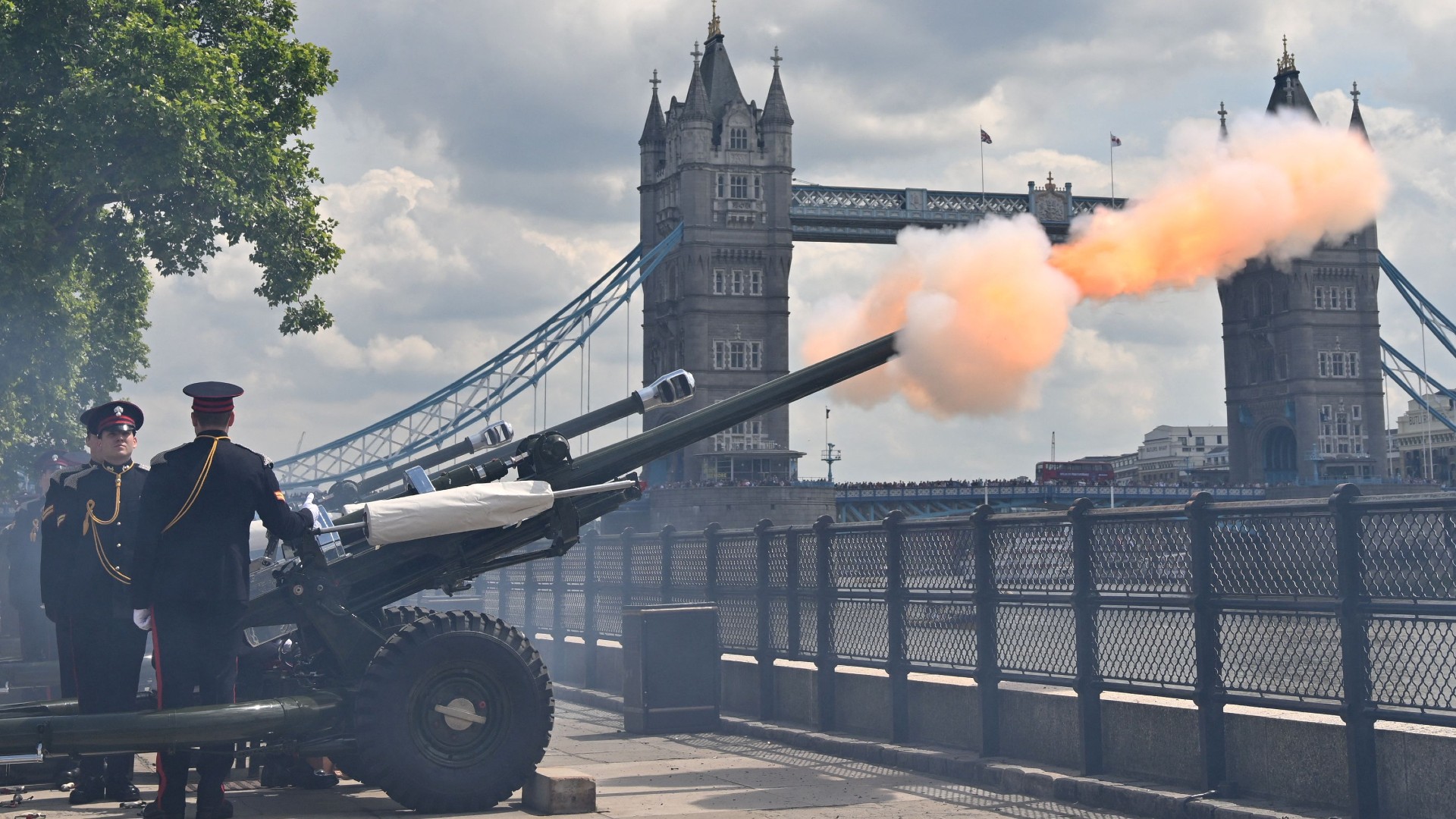
Royal gun salutes are fired on special occasions which could coincide with the Changing of the Guard ceremony.
Some of these include the likes of the monarch's birthday. A basic salute includes 21 rounds being fired. If the guns are in a Royal Park or Royal Palace then another 20 are added. Because the Tower of London is in the City of London, a further 21 are added here as well.
Sometimes, plenty of things collide and you get quite the spectacle. When Prince Phillip’s birthday coincided with the Queen's official birthday (Trooping the Colour in June) in 2006, the Tower of London salute comprised a record 124 rounds.
Shots were heard for around 24 minutes!
It was an all-male affair until 2007
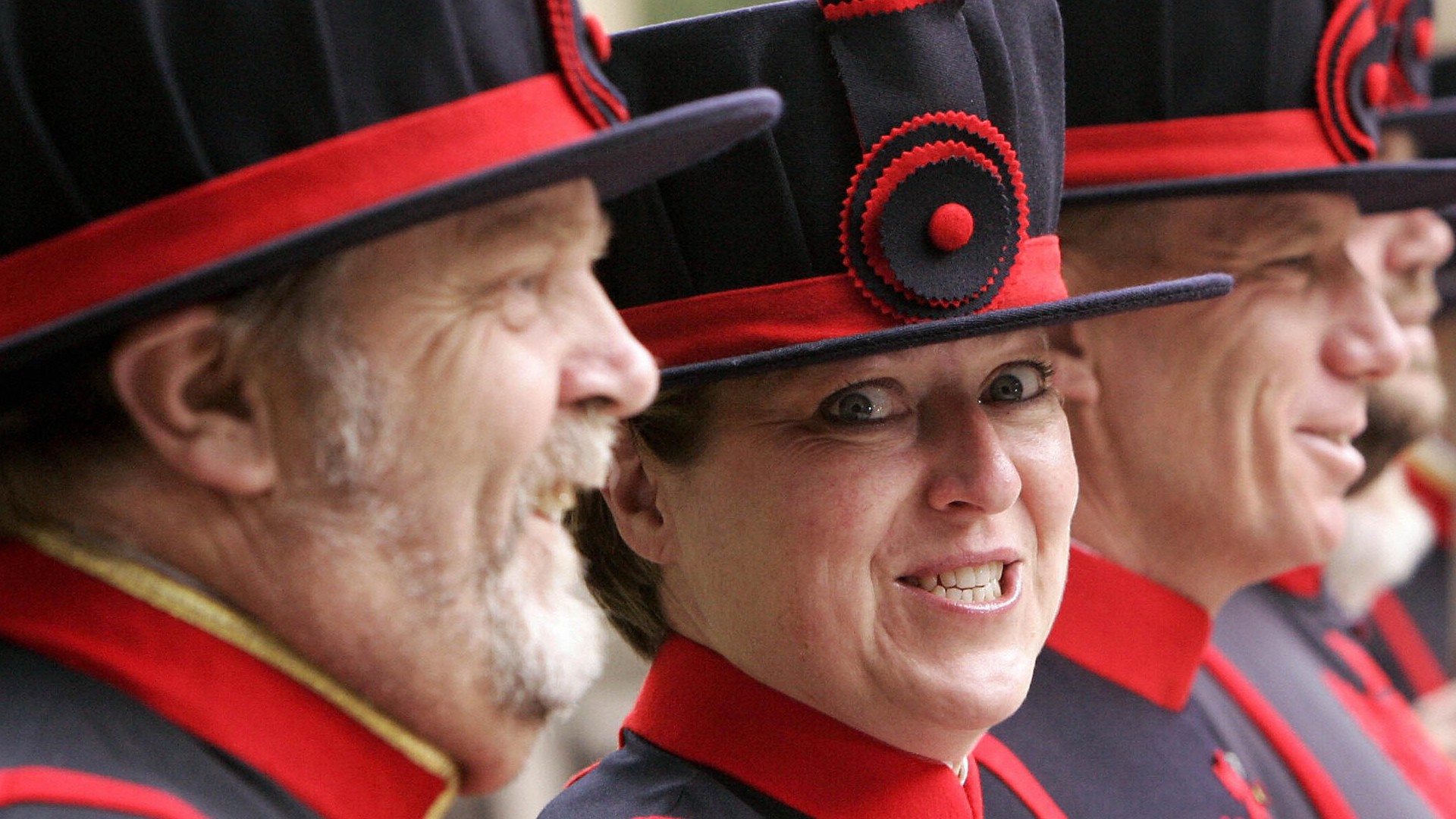
There's a reason many classic stories and reports of Changing the Guard refer to the guards as Guardsmen - it was a boys' club up until 2007.
In April 2007, the first women in the British Army served on detachments of the Queen's Guard when the King's Troop, Royal Horse Artillery took over the guard at Windsor Castle.
Pictured is Moira Cameron, the first female Yeoman Warder of the Tower of London, responsible for guarding the Tower.
The guards wear red for a number of reasons

The poppy red tunics worn by the guards are iconic and perhaps one of the first things people think of when one pictures anything to do with the palaces or royal events.
The reason for this red uniform is also surprisingly frugal.
Originally, red was one of the cheapest dyes to make, meaning the country could kit out the monarch's guards for less money.
A more military-based suggestion has it that red is the most difficult colour to see at a distance, meaning the tunics would merge into one blur and make it harder for enemies to work out the size of the regiment.
Pay close attention to other colours visible
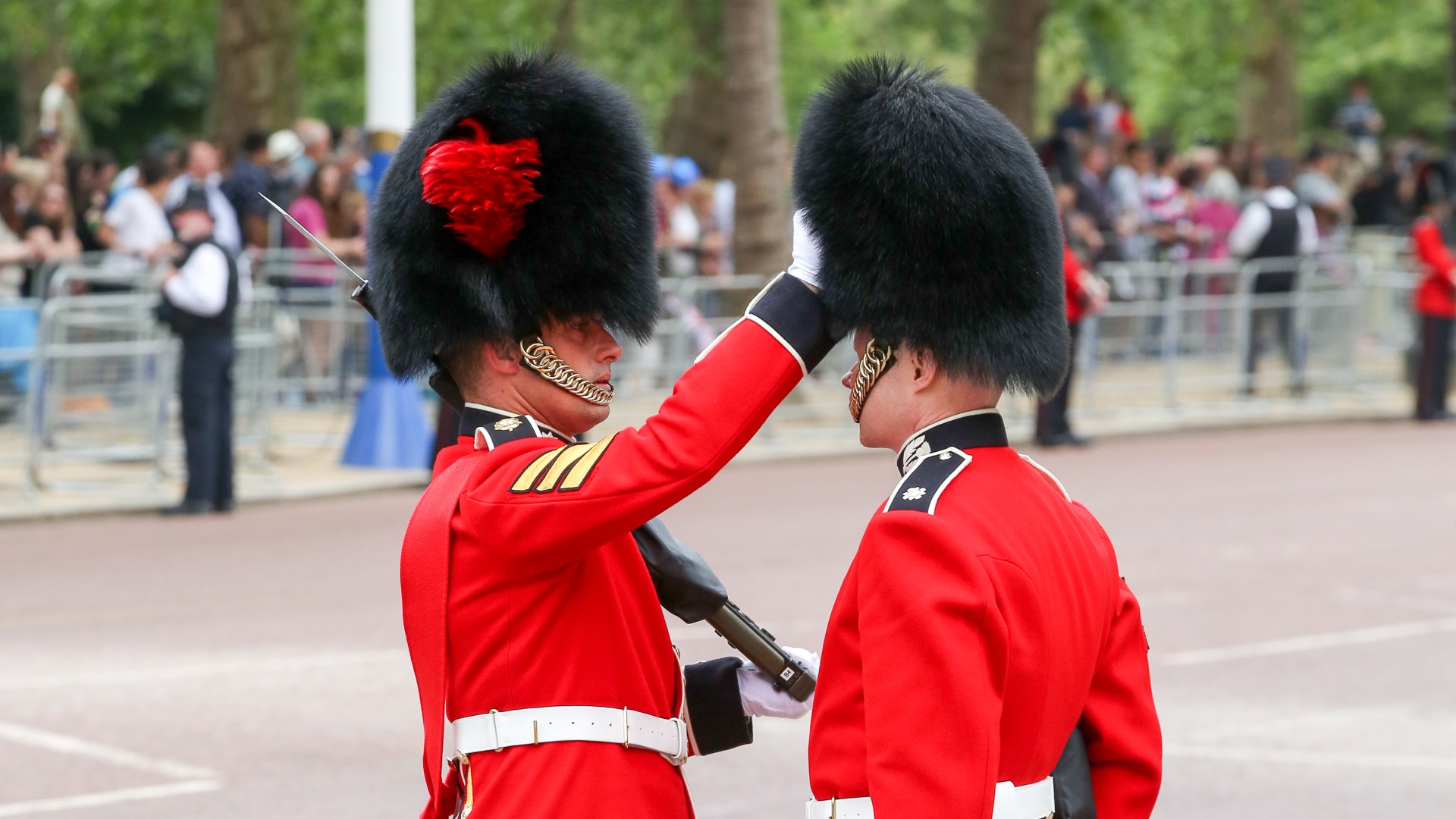
While most guards wear the famous red tunic, there are subtle differences which help work out which regiment each guard belongs to.
The easiest way to identify the regiment is by the colour of the soldier’s plume, the feather sticking out of their bearskin hat.
Of the five Foot Guard Regiments, the Grenadier Guards have a white plume, the Coldstream Guards have a red plume, the Irish Guards have a blue plume, the Welsh Guards have a white and green plume while the Scots Guards have no plume.
You can also identify them by observing the arrangement of buttons on their tunics and symbol on their collar.
History was made in 2017
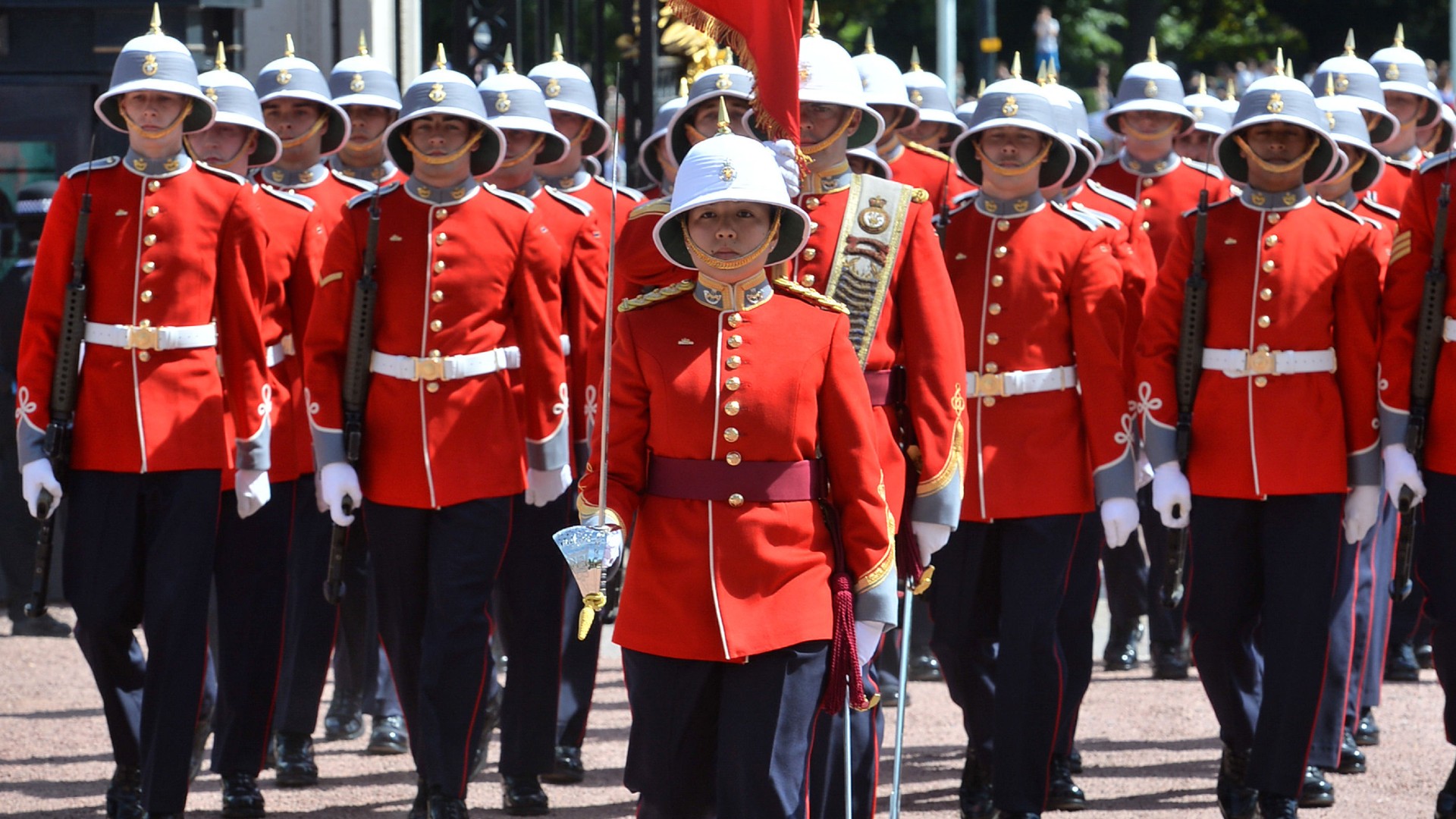
While the first women didn't join the Changing of the Guard until 2007, it took another 10 years for a female soldier to lead the ceremony.
A Canadian soldier, Captain Megan Couto, became the first woman to lead the Changing of the Guard at Buckingham Palace on June 26, 2017.
Despite making history, Captain Couto took it all in her stride, telling reporters before the ceremony, "It is just another day on the job. But it is a pretty special one..."
There was no Changing of the Guard in September 2022
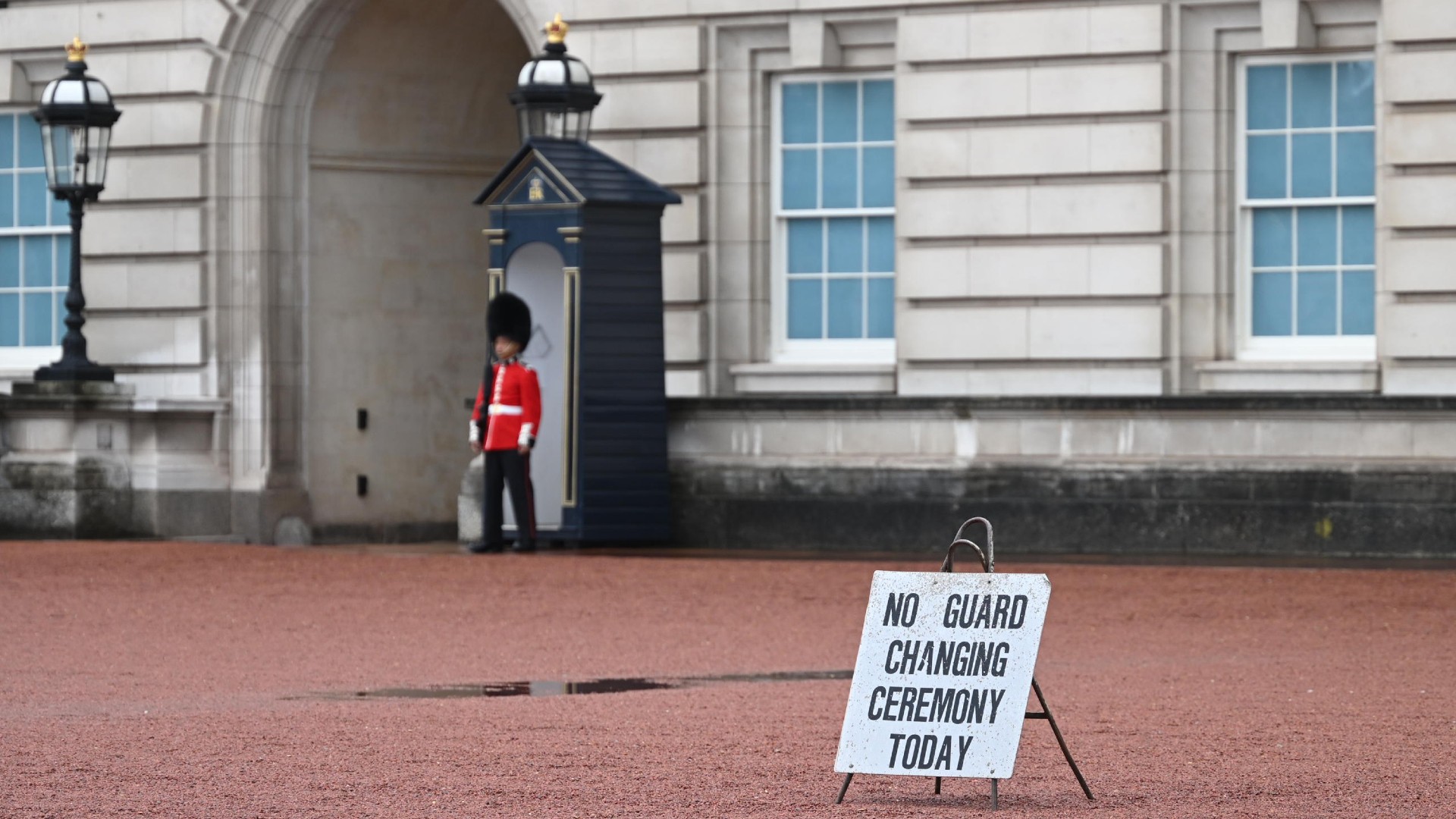
One of the first signs that something historic was happening on September 8, 2022, was a sign posted outside Buckingham Palace alerting that there would be no Changing the Guard that day.
At the time, people weren’t aware that this would be the day Queen Elizabeth would die, aged 96, at Balmoral Castle.
The Queen broke with history for a poignant reason
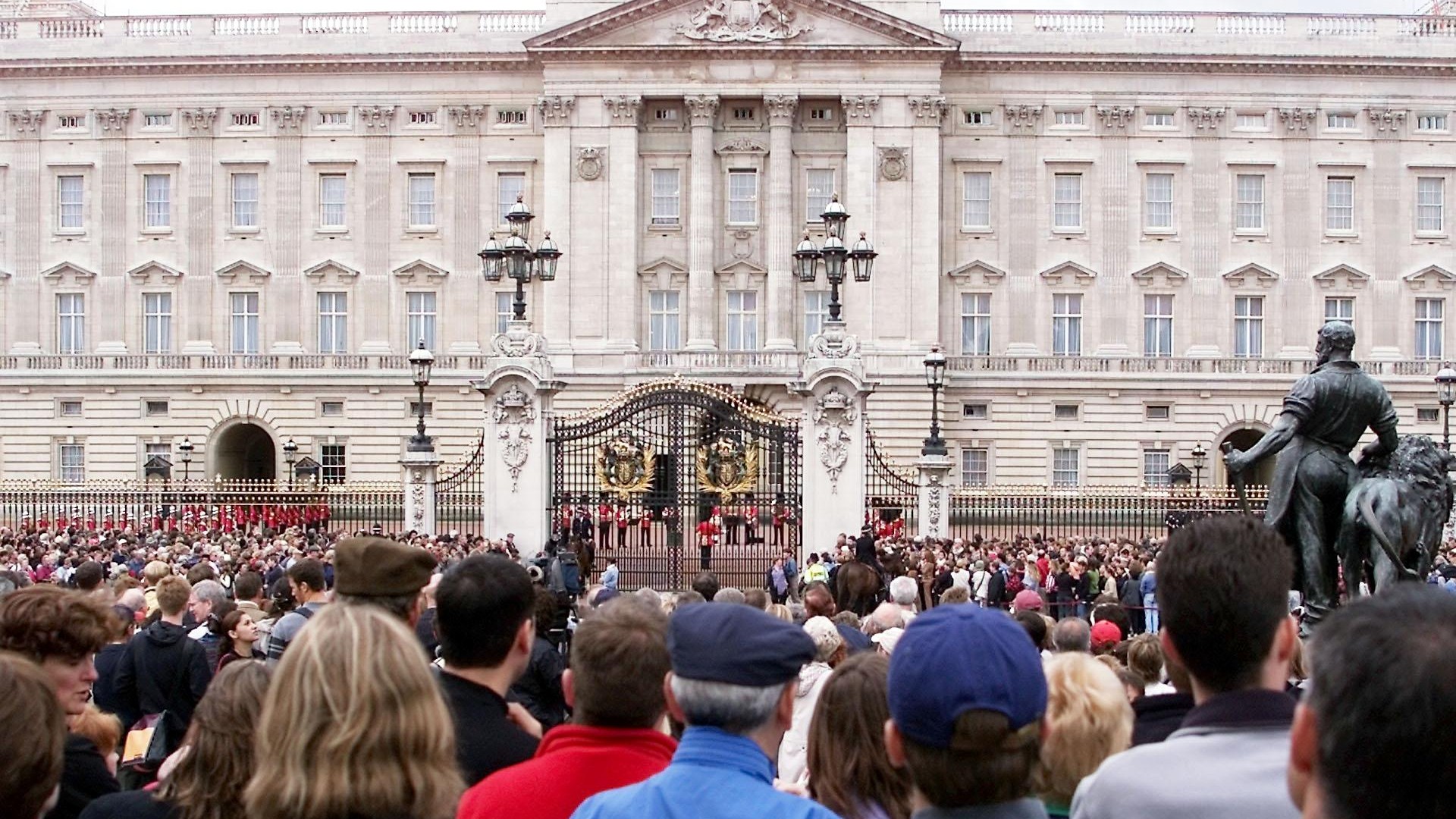
After the terror attacks on 9/11 in 2001, the Queen made one of the most heartfelt gestures which defied centuries of tradition.
The royal guards hadn't played another country's national anthem before, but to mark the horrific moment in history and to offer support to the people who had come to the Palace, the guards played the U.S. national anthem in moving scenes.
Occasionally, overseas regiments are invited to take part
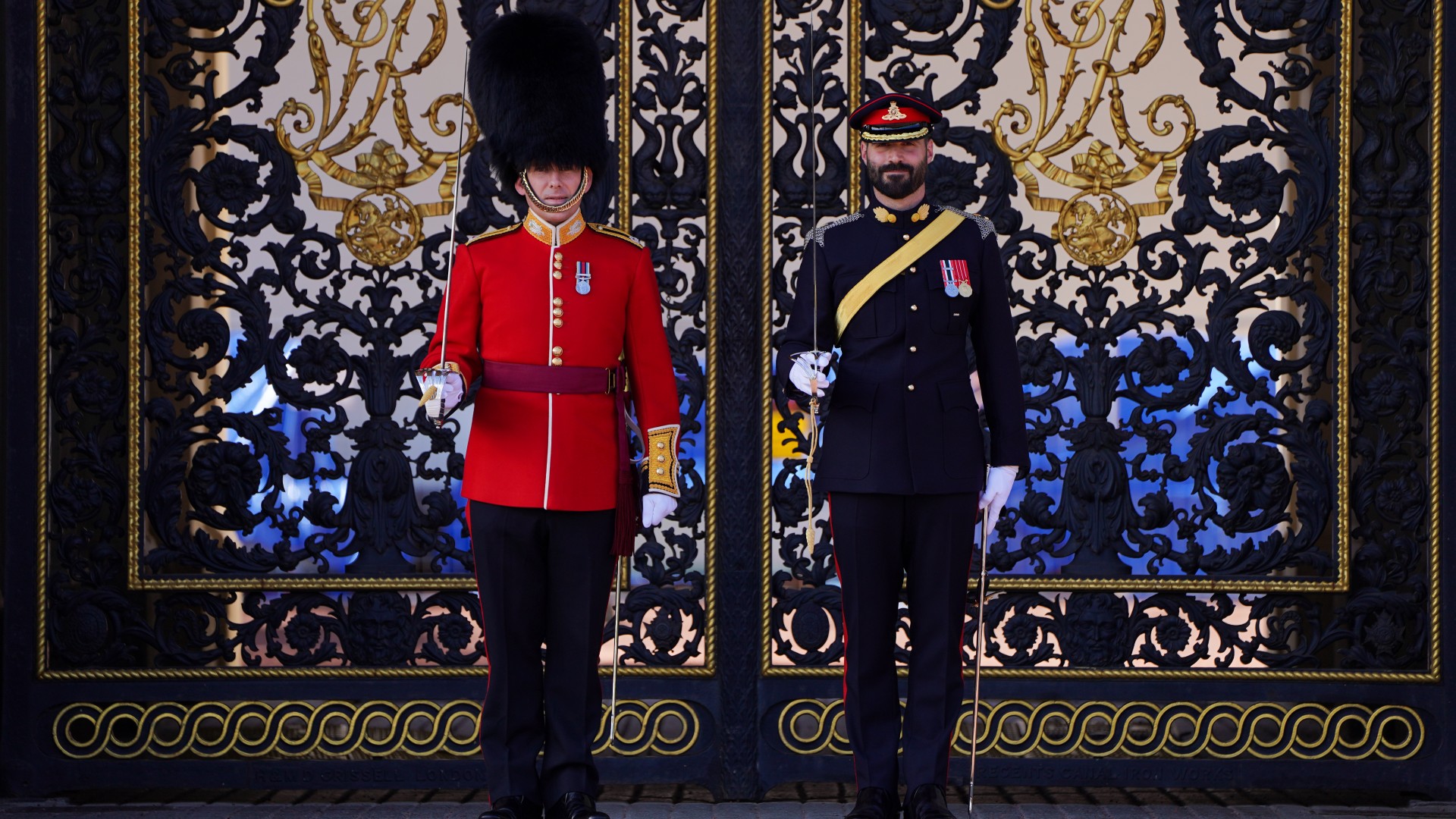
In 2021, the Canadian Gunners guarded Queen Elizabeth II for the first time.
90 soldiers of the Royal Regiment of Canadian Artillery (RCA) accompanied by thirty-six musicians from their band were on parade during the Changing of the Guard at Wellington Barracks.
The special honour was to commemorate the 150th anniversary of the founding of the Royal Regiment of Canadian Artillery’s A and B Batteries in Kingston Ontario and Quebec City back in 1871.
In April 2024, the French guarded the Palace
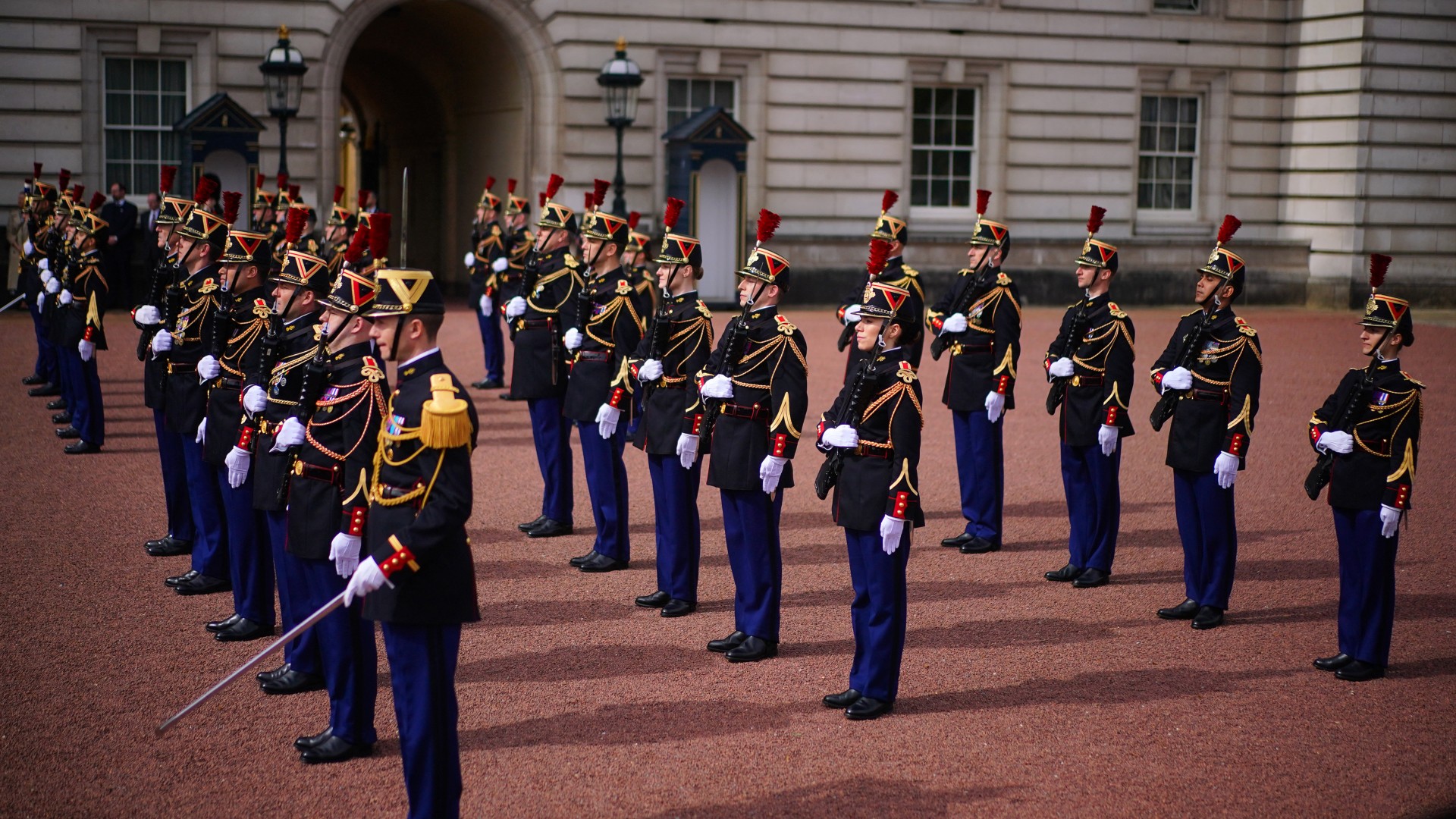
Another benefit of the Changing the Guard ceremony is to strengthen political ties between countries.
In 2024, 32 French soldiers from the Republican Guard of the National Gendarmerie joined 40 Guardsmen from the Scots Guards to parade the grounds together.
A similar guard change was sent to French President Emmanuel Macron on the same day, with 16 soldiers from the Coldstream Guards joining troops from a Regiment de la Garde Republicaine to provide the Presidential Guard outside the Elysee Palace.
Other active regiments are sometimes invited
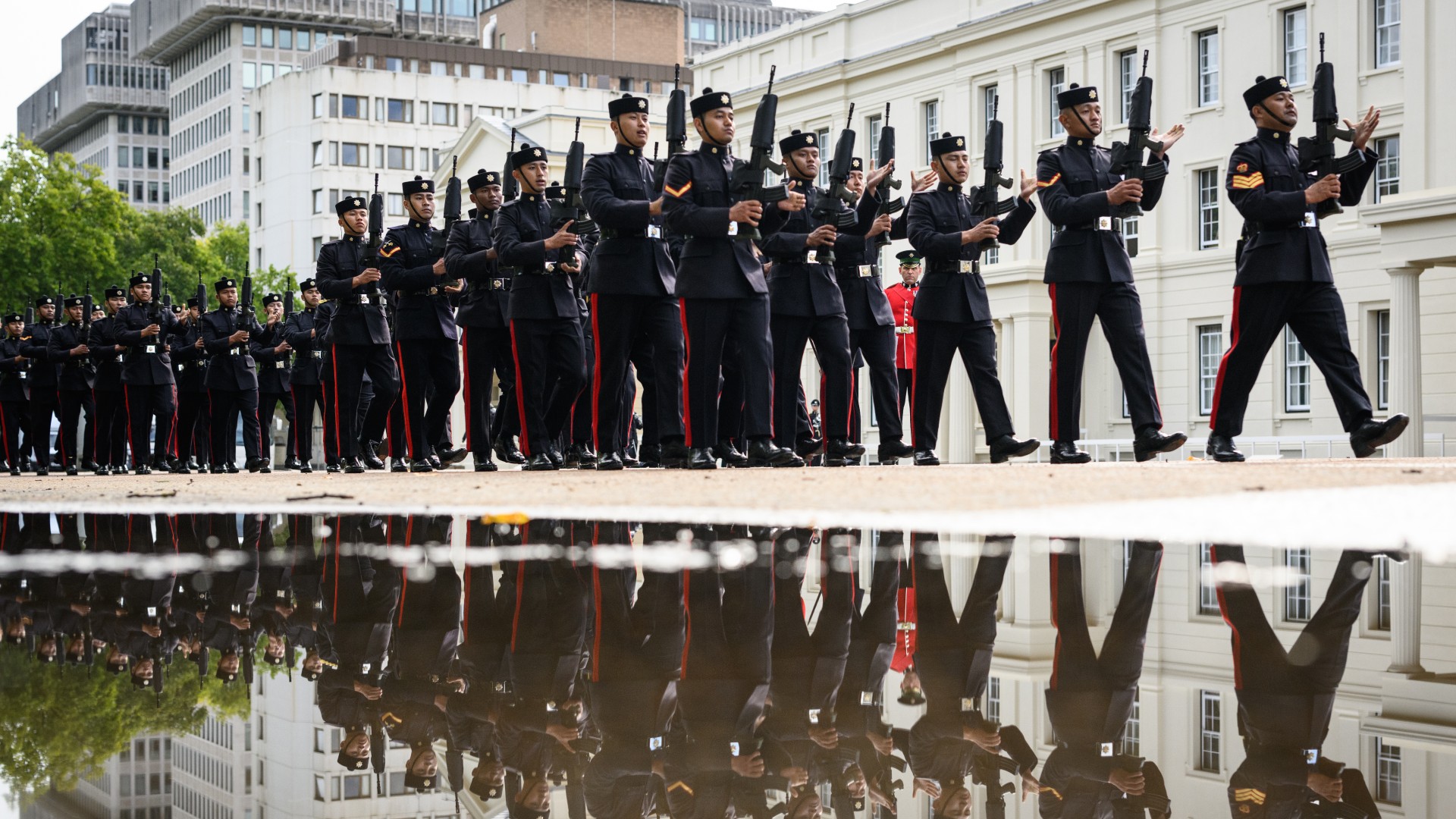
Over the years, as a huge sign of respect and honour, other serving bodies and authorities have been invited to take part in the prestigious ceremony.
Getting to guard the monarch, the likes of the Gurkhas, the Royal Air Force and the Royal Marines have been invited to take part in the Changing of the Guard.
Keep an eye on the flag above the palace
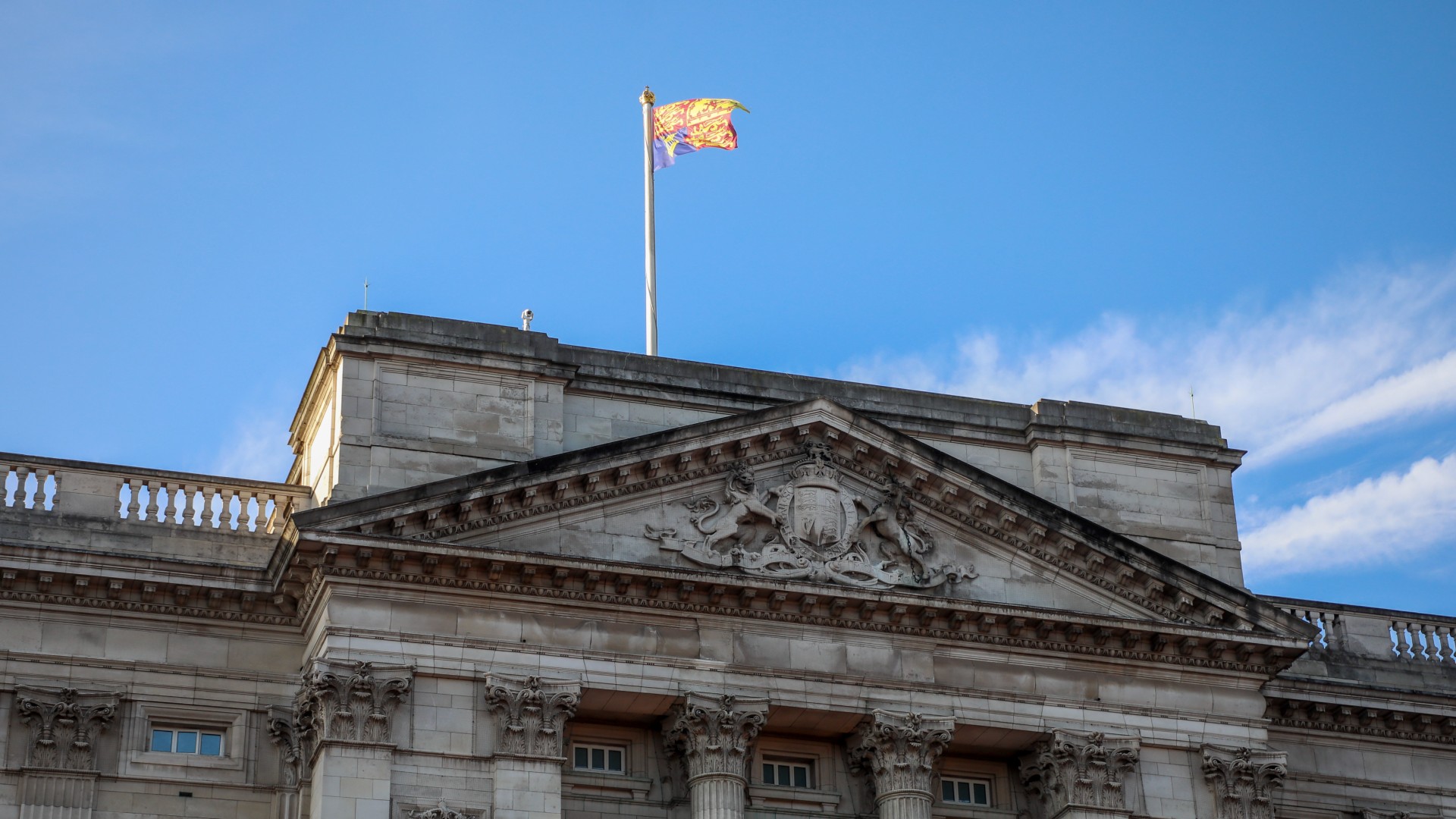
If the Royal Standard is flying above the Palace instead of the Union Jack, there’ll be some notable differences.
The guard at Buckingham Palace will be doubled from two to four in the forecourt, and the numbers at St James’s Palace will be doubled. Also, the centre front horse of the cavalry during their change ceremony will be white.

Jack Slater is not the Last Action Hero, but that's what comes up first when you Google him. Preferring a much more sedentary life, Jack gets his thrills by covering news, entertainment, celebrity, film and culture for woman&home, and other digital publications.
Having written for various print and online publications—ranging from national syndicates to niche magazines—Jack has written about nearly everything there is to write about, covering LGBTQ+ news, celebrity features, TV and film scoops, reviewing the latest theatre shows lighting up London’s West End and the most pressing of SEO based stories.
-
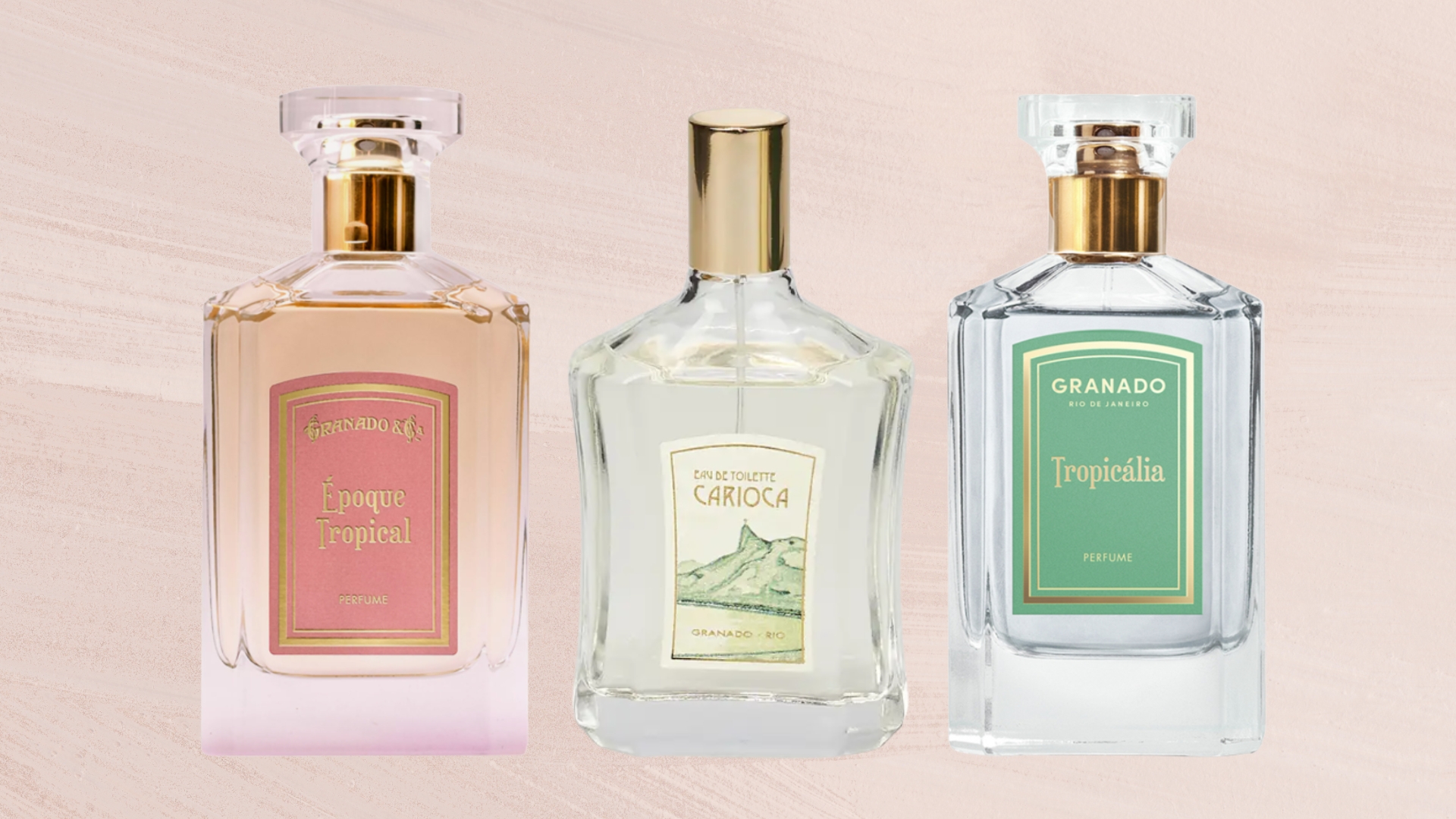 This chic, Brazillian perfume brand is our beauty team's secret to smelling expensive and unique
This chic, Brazillian perfume brand is our beauty team's secret to smelling expensive and uniqueFrom salty accords to modern twists on tuberose, there's a Granado perfume for every preference - but these 9 blends have our heart...
By Naomi Jamieson Published
-
 This £10 primer is the only thing that can make my foundation last past lunchtime
This £10 primer is the only thing that can make my foundation last past lunchtimee.l.f. Power Grip Primer is the budget buy our oily-skinned Beauty Editor, Jess Beech, can't live without
By Jess Beech Published
-
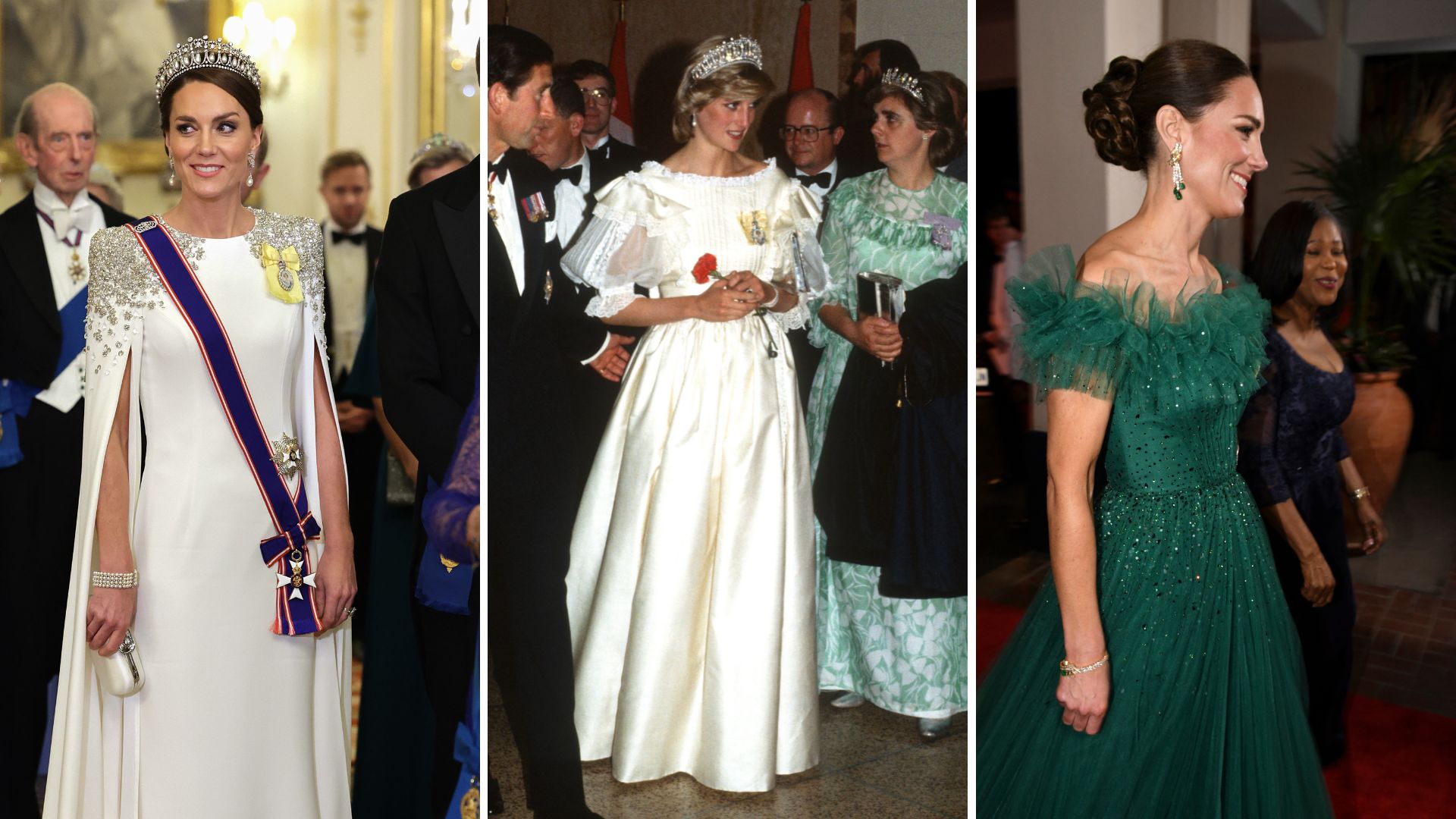 The most glamorous state banquet looks worn by the Royal Family and starry guests over the years
The most glamorous state banquet looks worn by the Royal Family and starry guests over the yearsA state banquet is always a good reason for the royals and A-list guests to bring out their best fashion
By Jack Slater Published
-
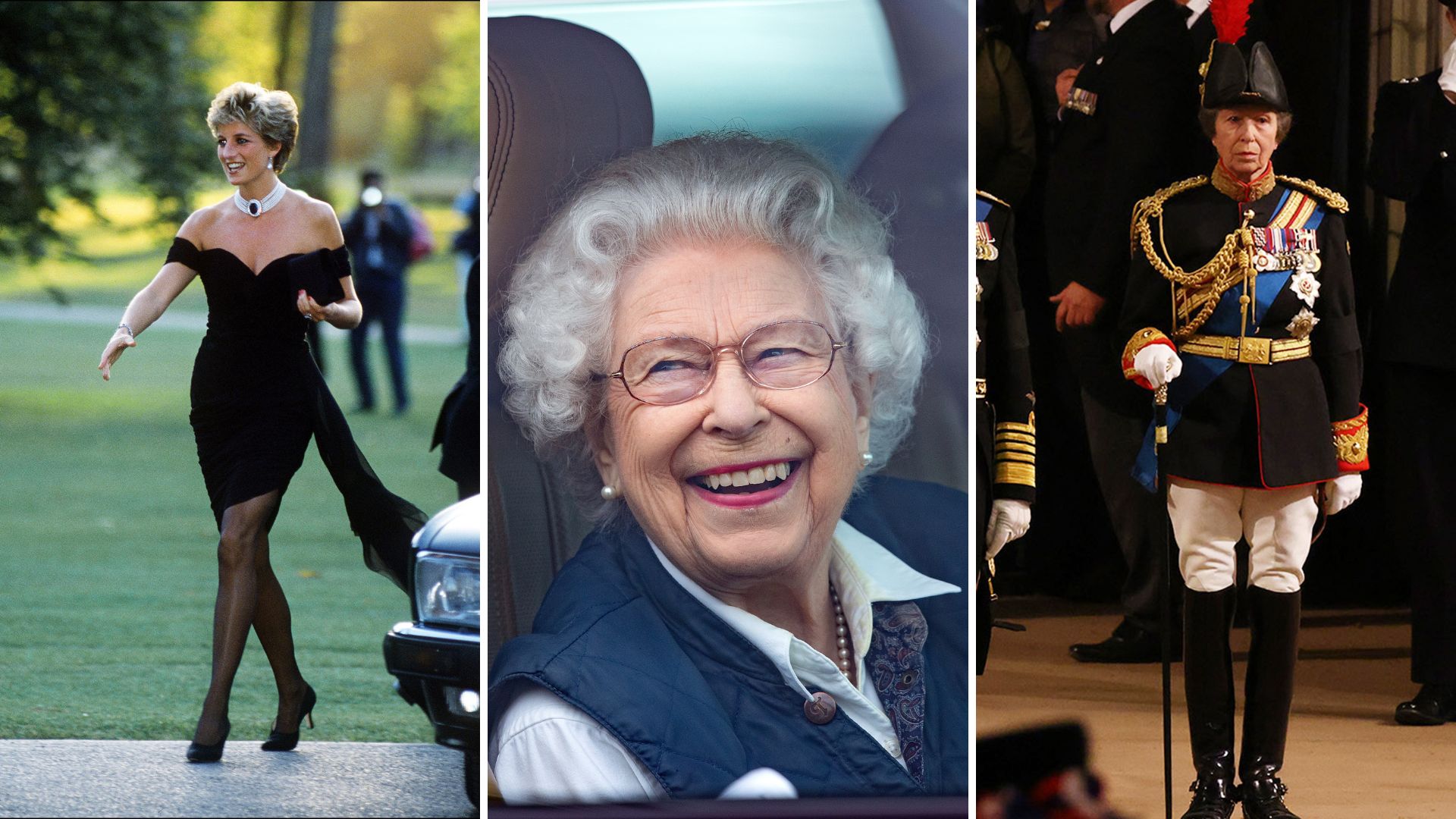 The best 'girl power' quotes and examples of royals being the ultimate feminists
The best 'girl power' quotes and examples of royals being the ultimate feministsYes, royals know how to spread the word of girl power
By Jack Slater Published
-
 A look at the Royal Family giving back - the charities and patronages with personal and moving connections to the royals
A look at the Royal Family giving back - the charities and patronages with personal and moving connections to the royalsCharity and service is a massive part of the royal way of life, but sometimes a charity has a deeper, more personal connection
By Jack Slater Published
-
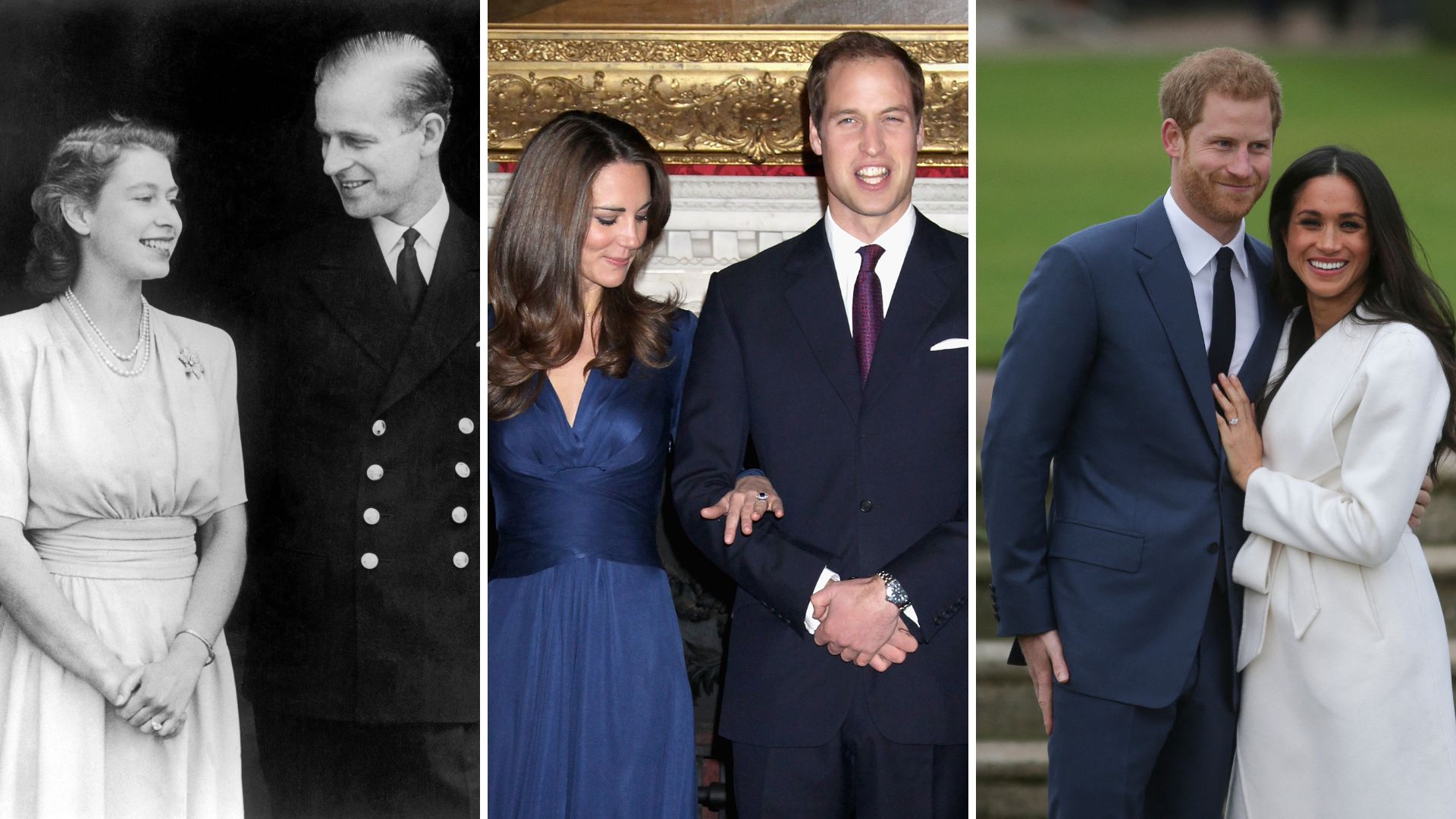 The most romantic details from royal engagement stories that make us swoon
The most romantic details from royal engagement stories that make us swoonFrom the symbolism behind the rings to the touching reasons behind the location, these royal engagement stories make us believe in romance
By Jack Slater Published
-
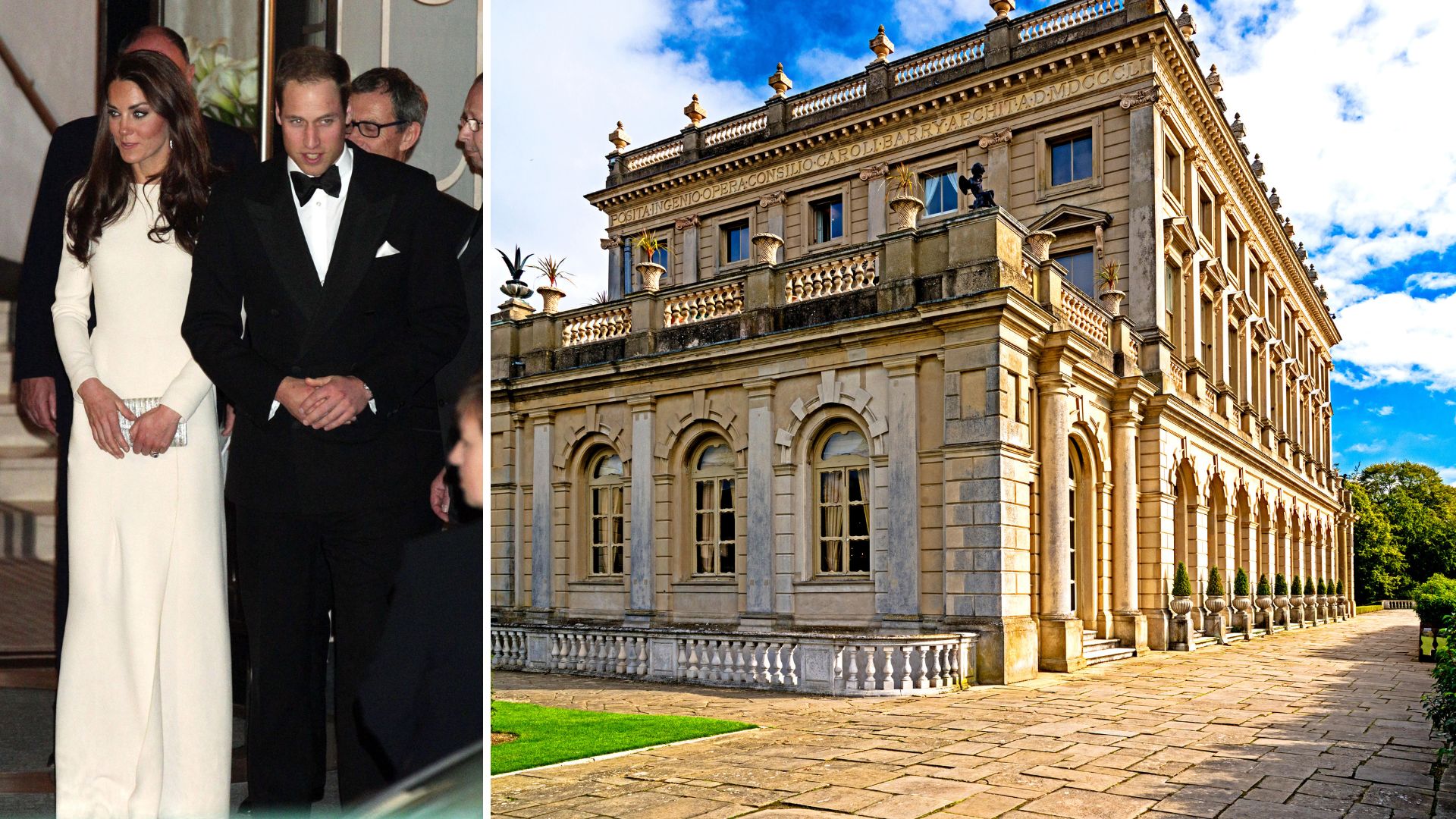 The places the Royal Family love to eat and drink at, from iconic London bars and hotels to other European hotspots
The places the Royal Family love to eat and drink at, from iconic London bars and hotels to other European hotspotsEver wondered how to dine out like a duchess or party like a princess? You can start by visiting these royal approved hotspots
By Jack Slater Published
-
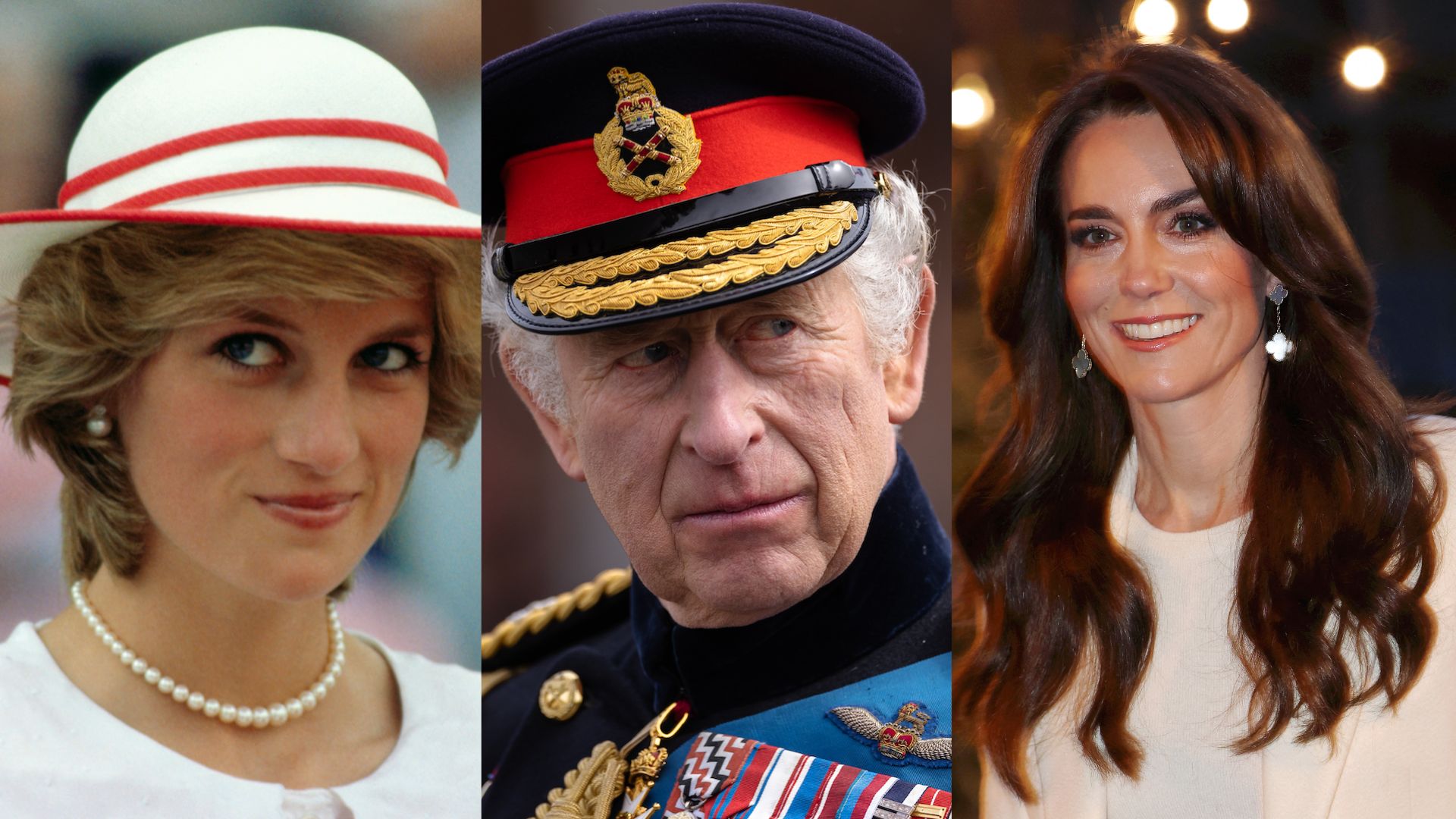 Foods the royals are obsessed with, from the King's eggs of choice to Kate Middleton's go-to pizza
Foods the royals are obsessed with, from the King's eggs of choice to Kate Middleton's go-to pizzaCurious about what the famous family snack on? These are the foods the royals are obsessed with...
By Lauren Clark Published
-
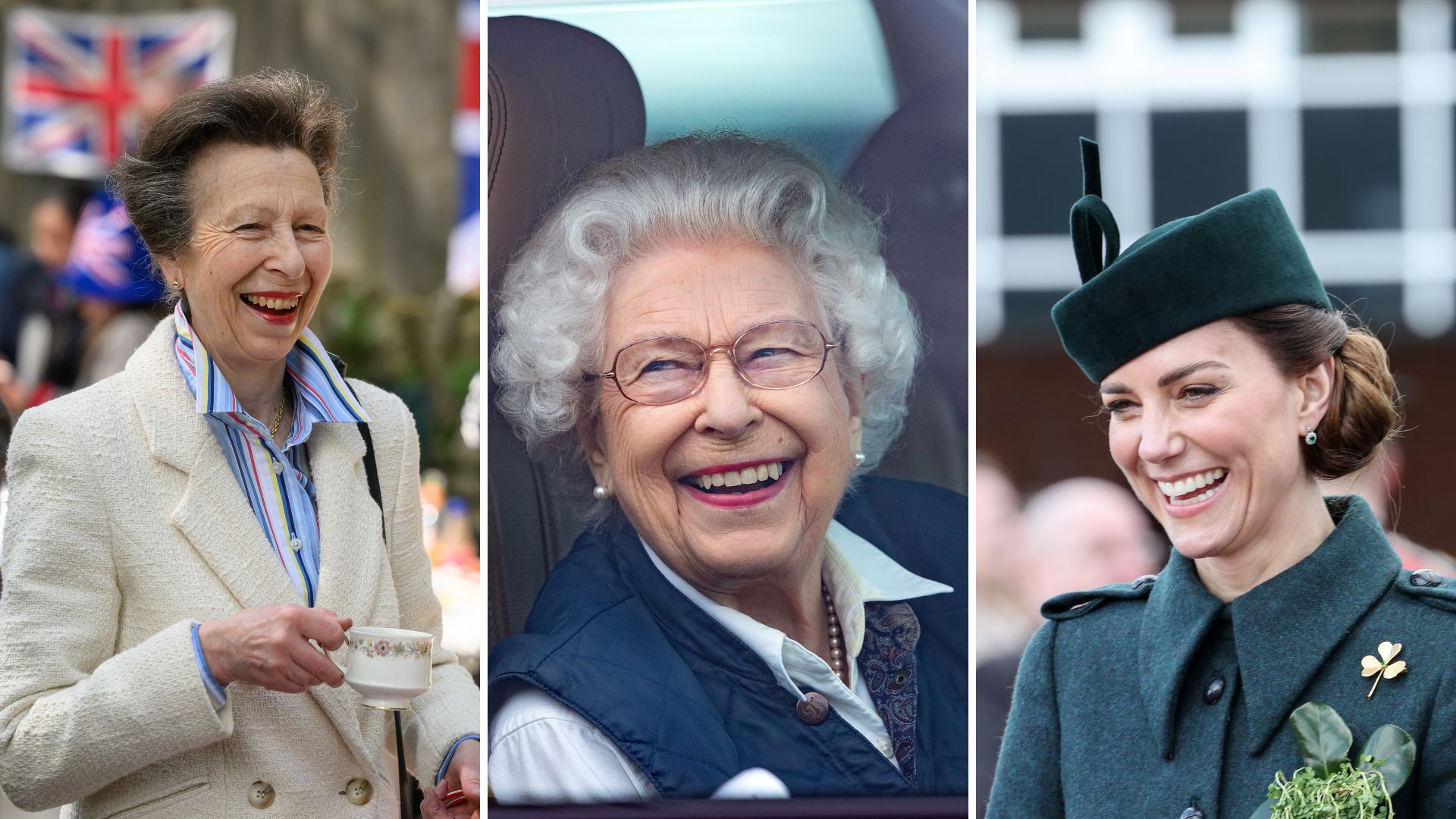 The funniest Royal Family one-liners and witty quotes that still make us chuckle
The funniest Royal Family one-liners and witty quotes that still make us chuckleFrom Queen Elizabeth's dry wit to Prince Philip's toe-curling gaffes, the royals know how to keep us laughing
By Jack Slater Published
-
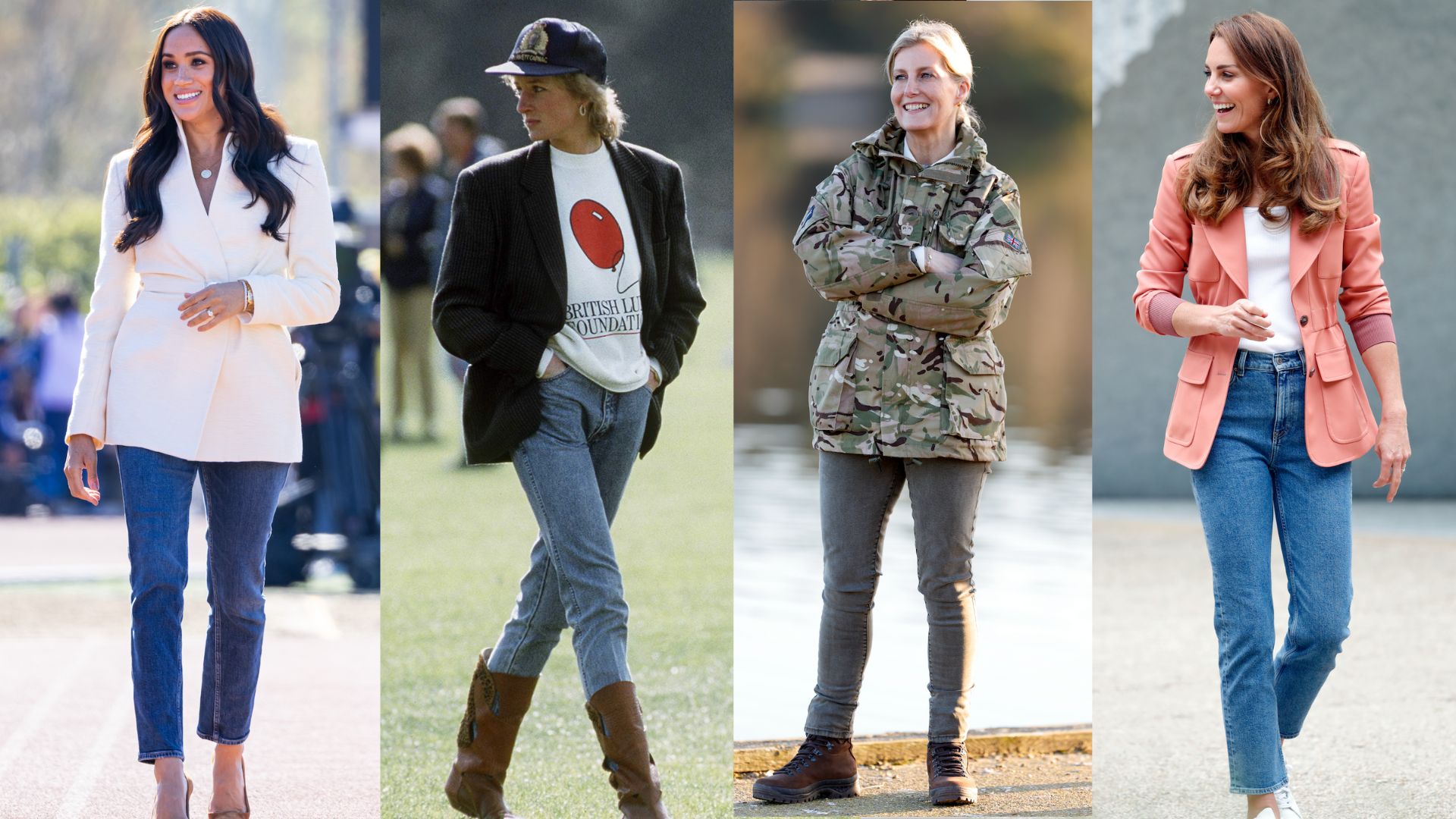 All the times the royals wore denim with aplomb, from Meghan Markle to Princess Diana
All the times the royals wore denim with aplomb, from Meghan Markle to Princess DianaLooking for a fresh way to style your jeans? Here are the times the royals wore denim and nailed laidback chic...
By Lauren Clark Published